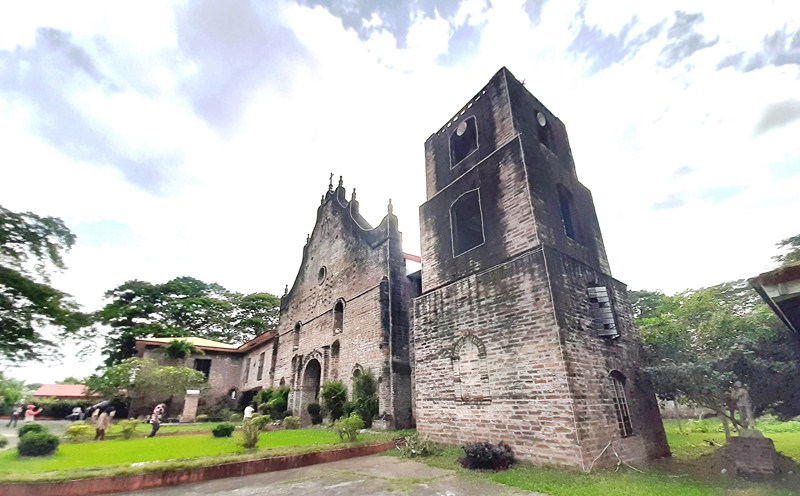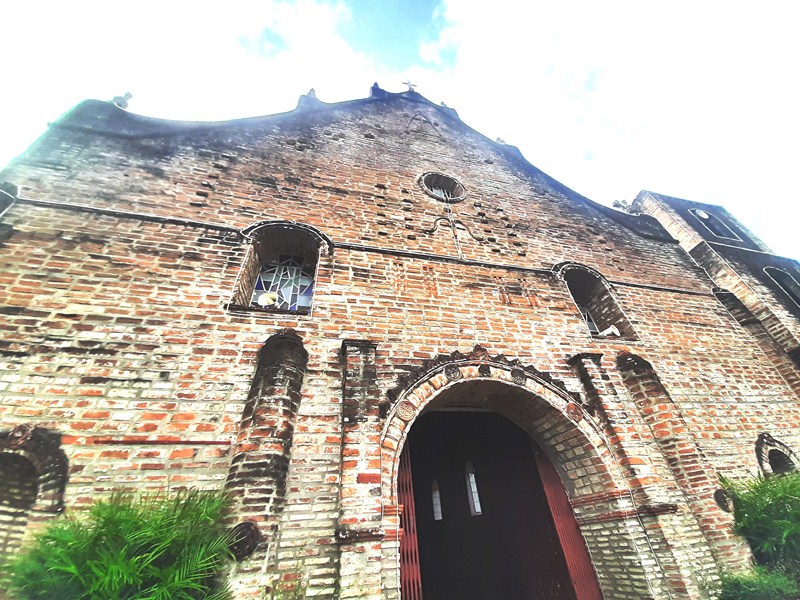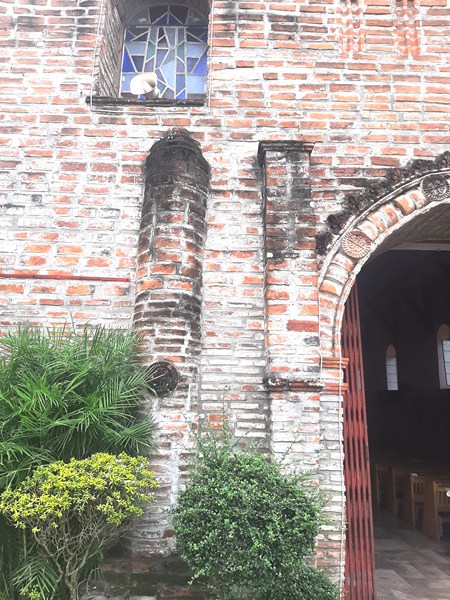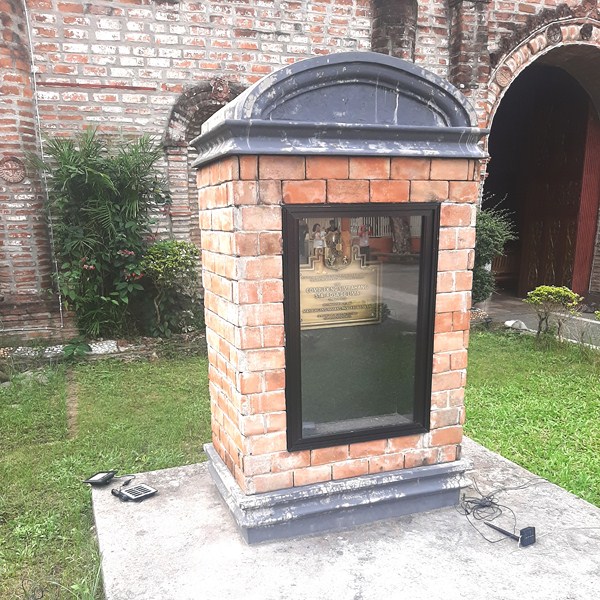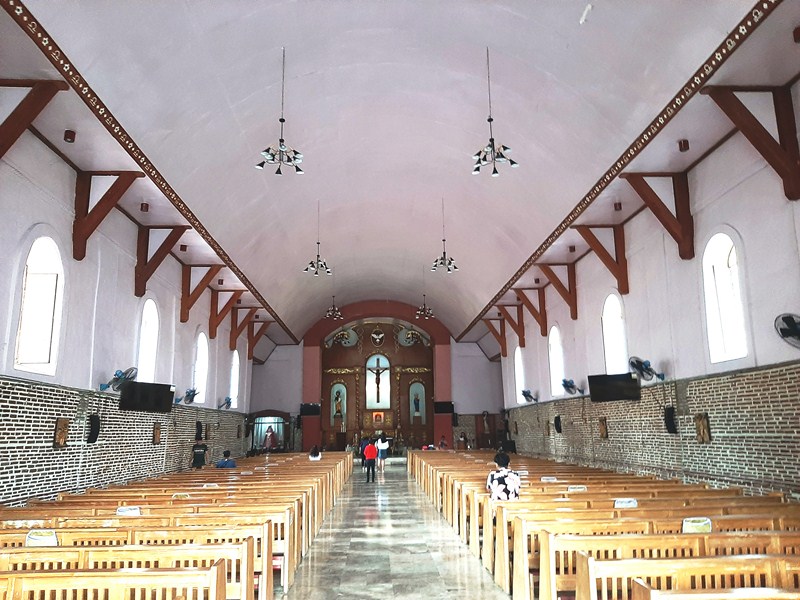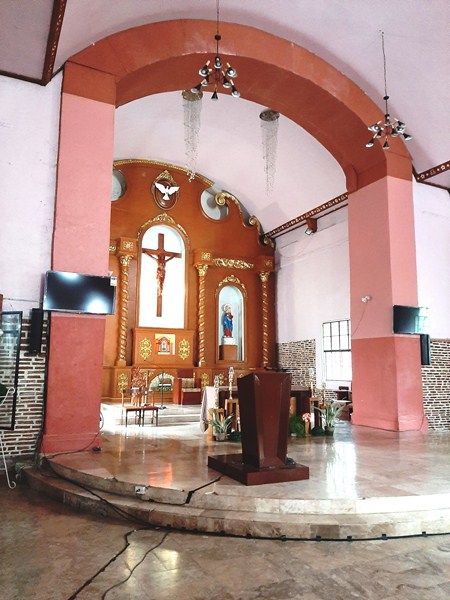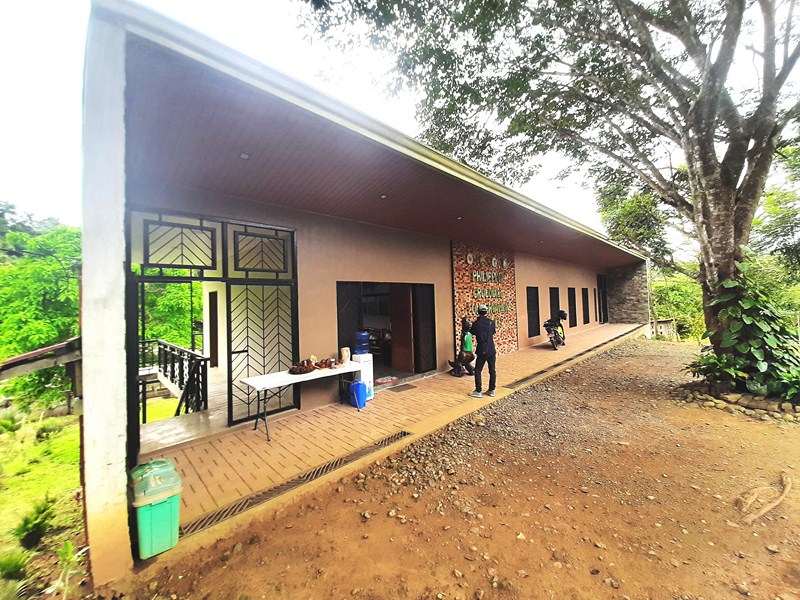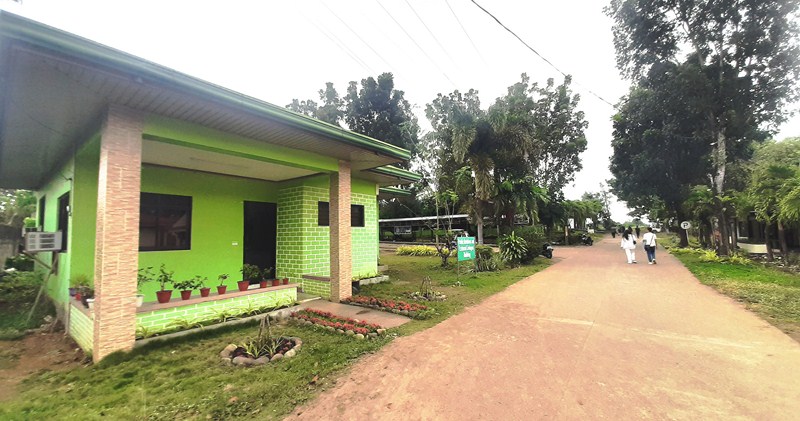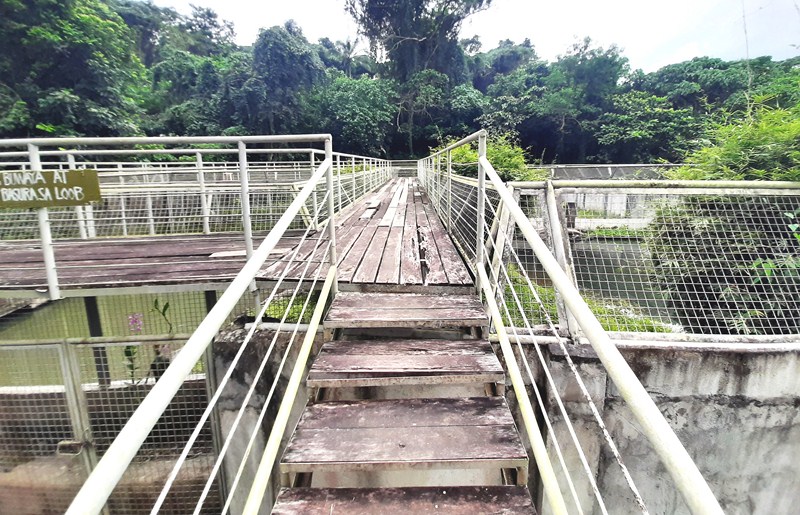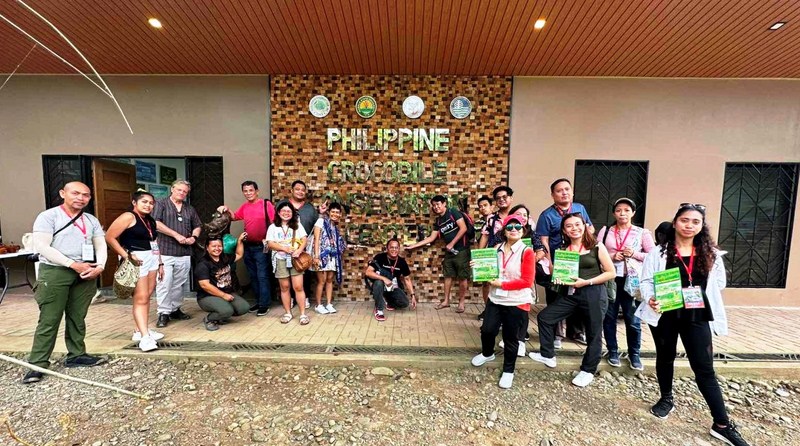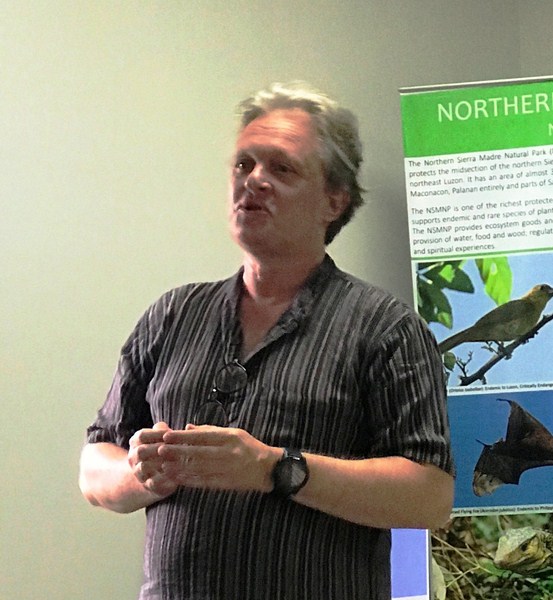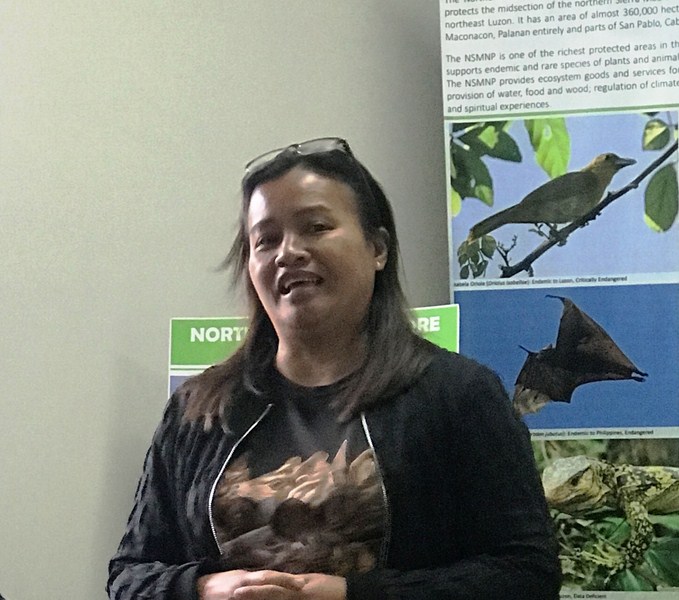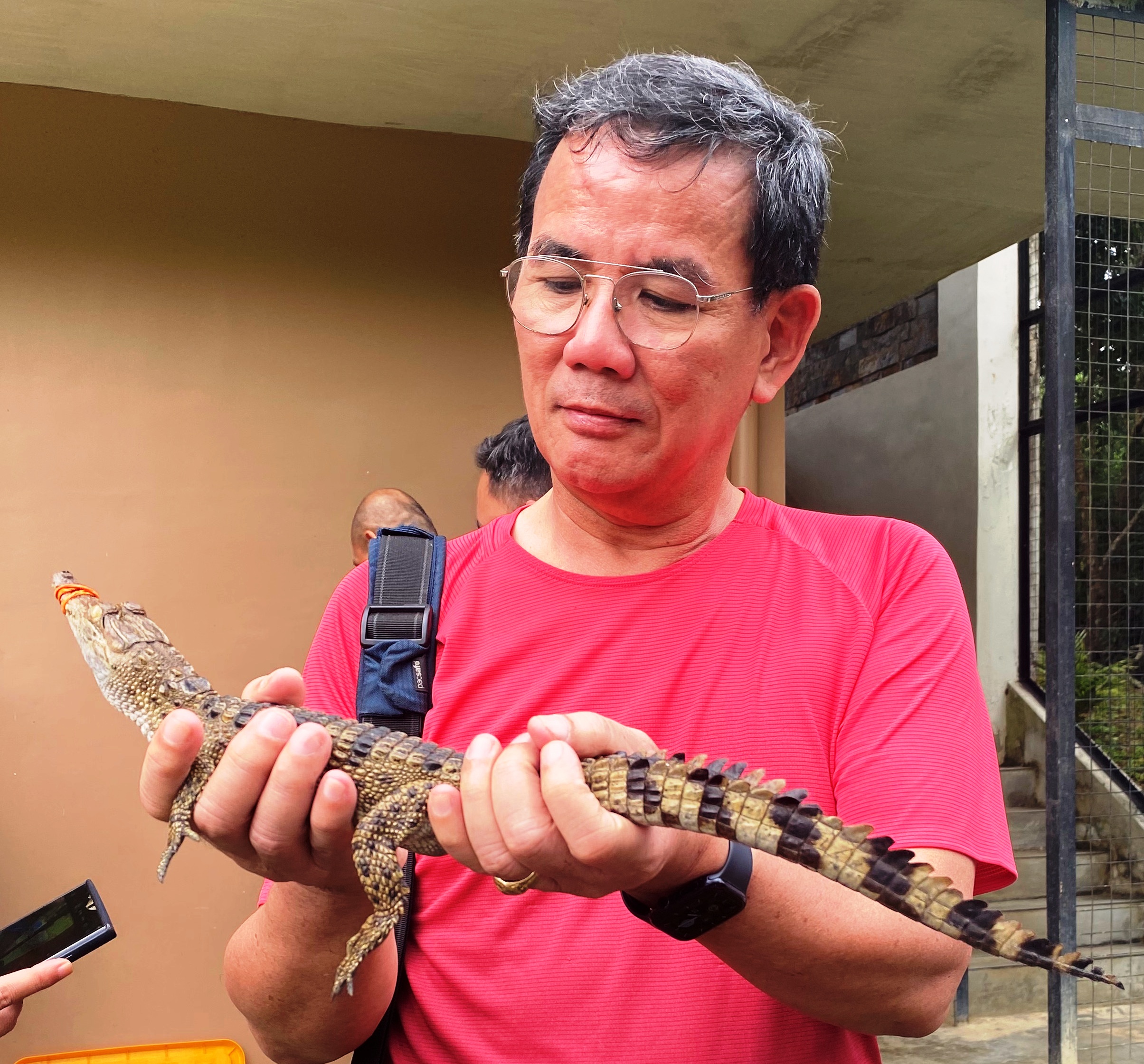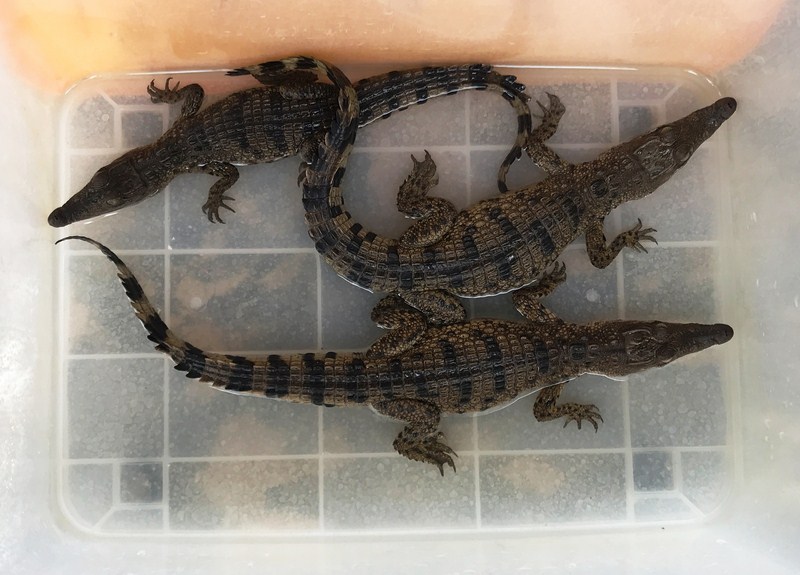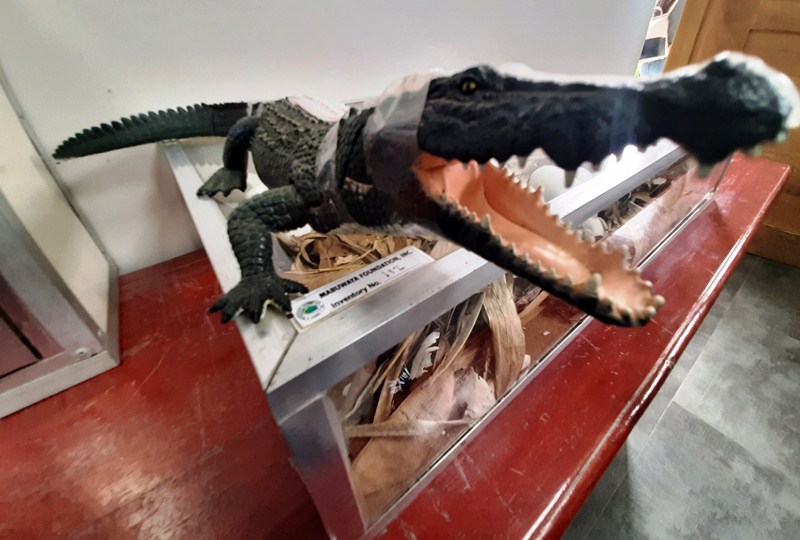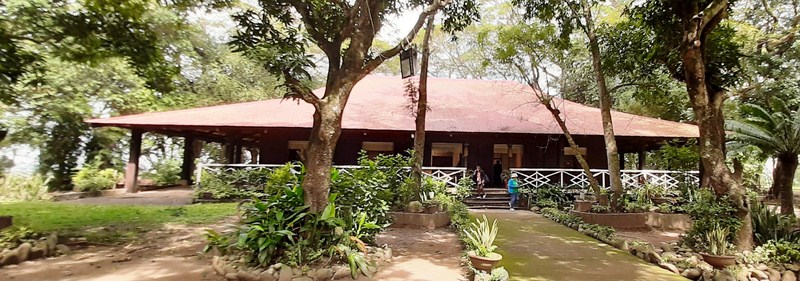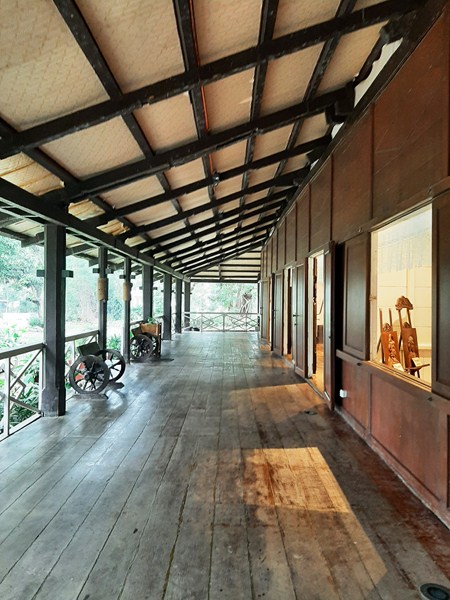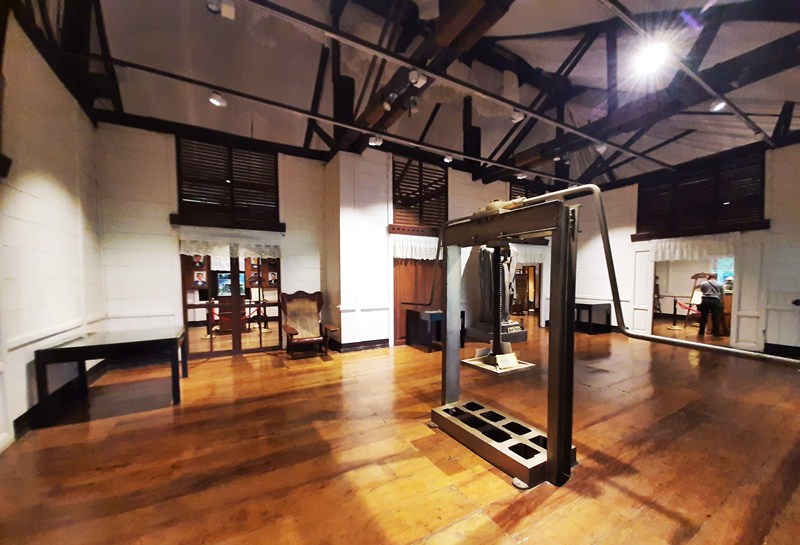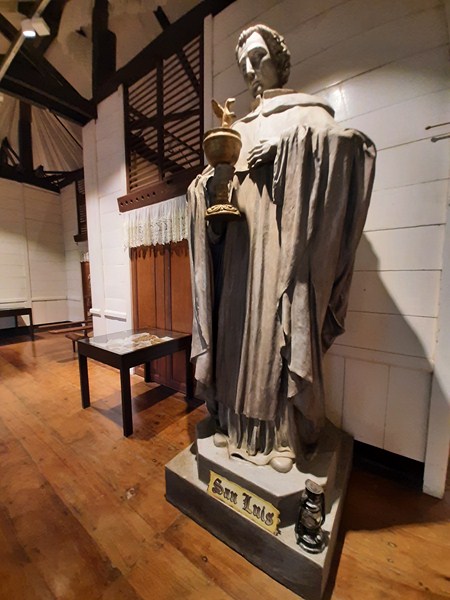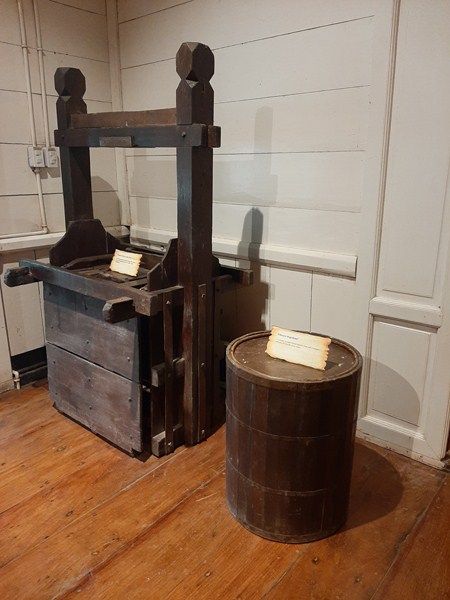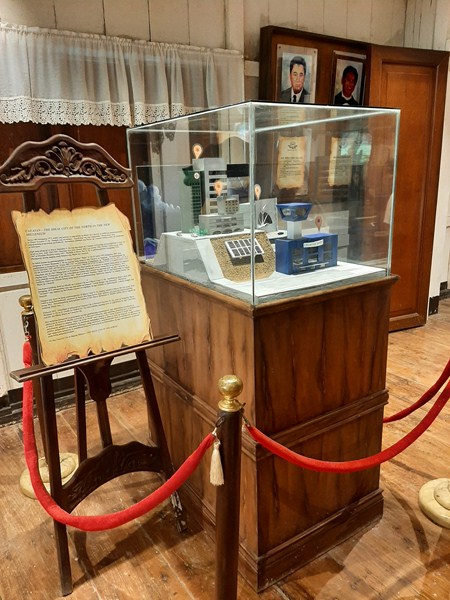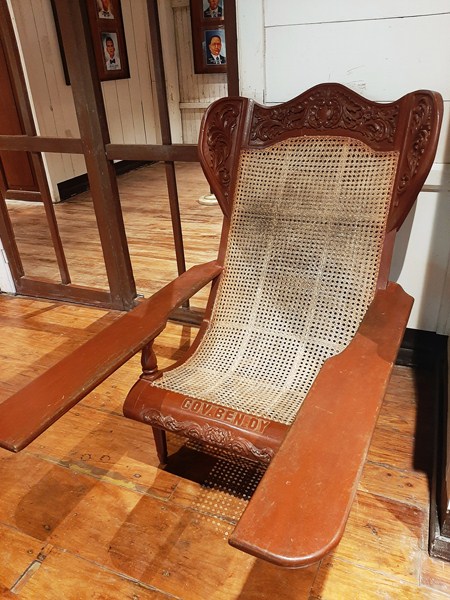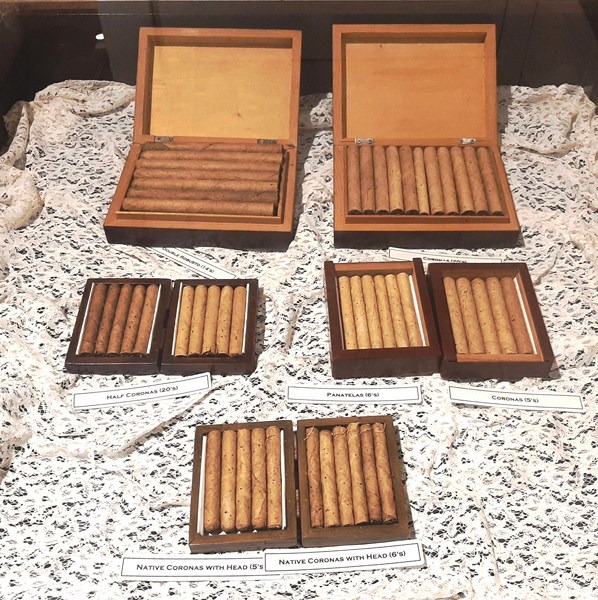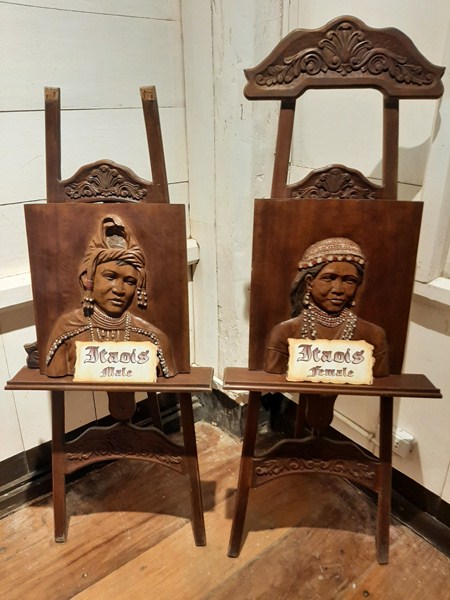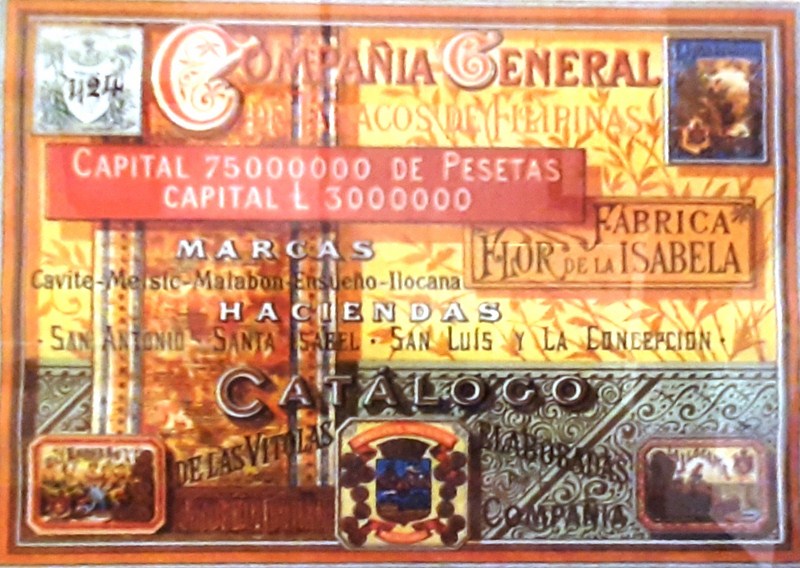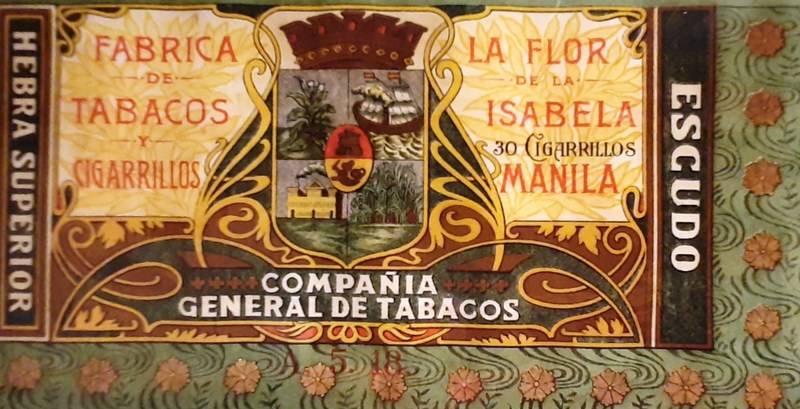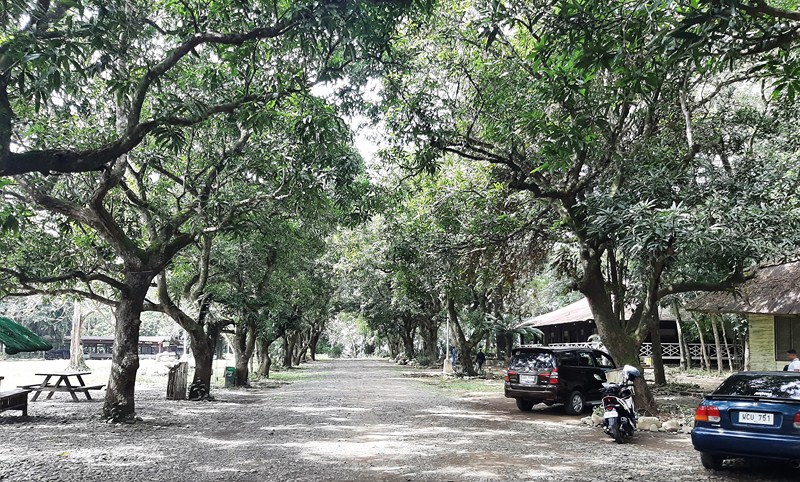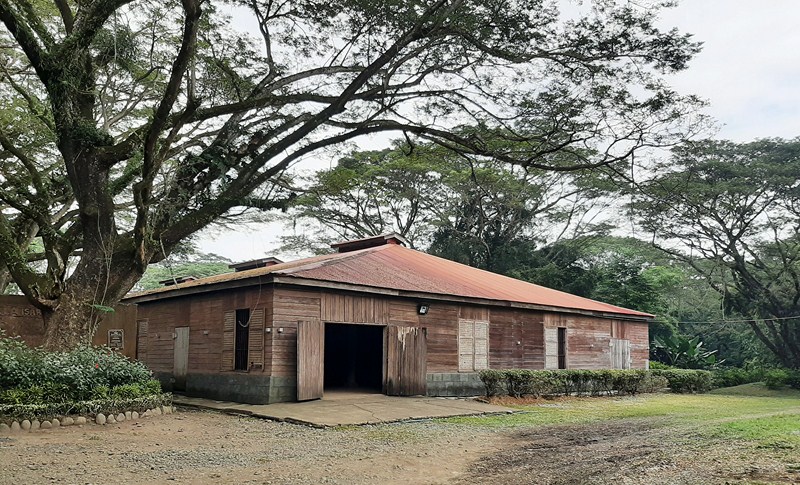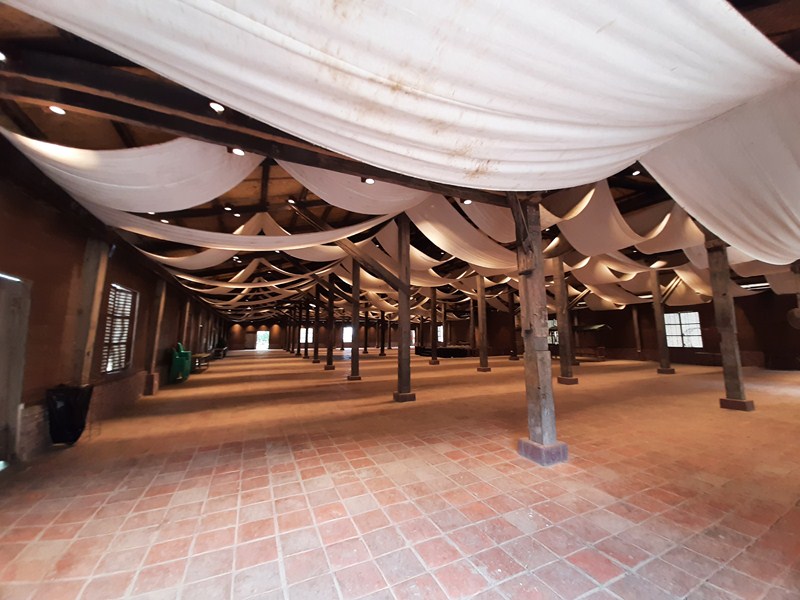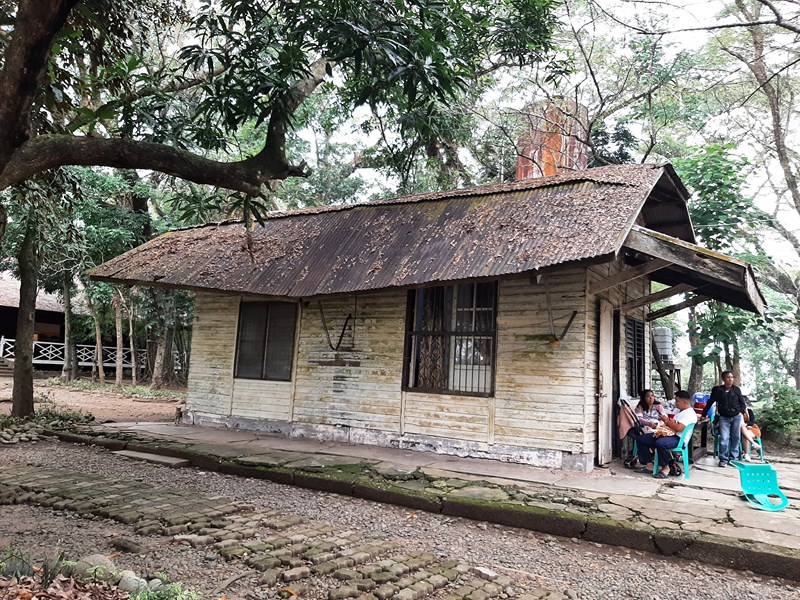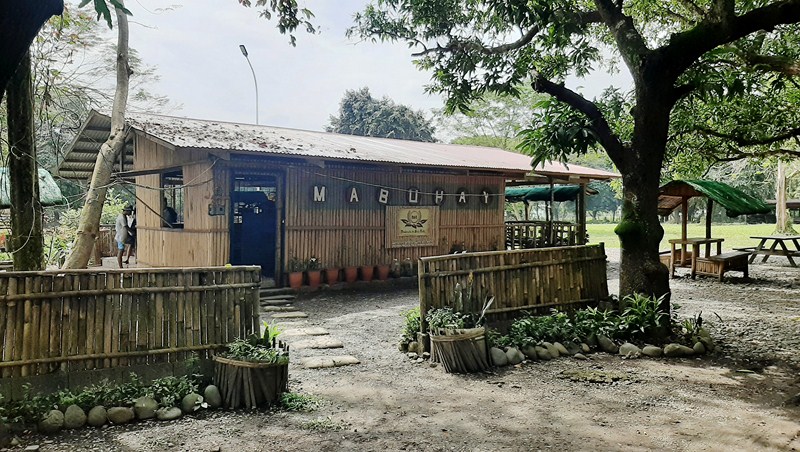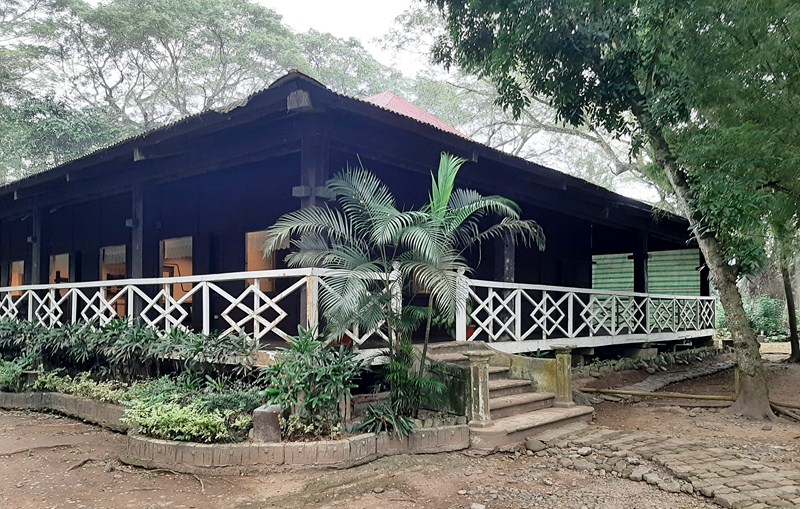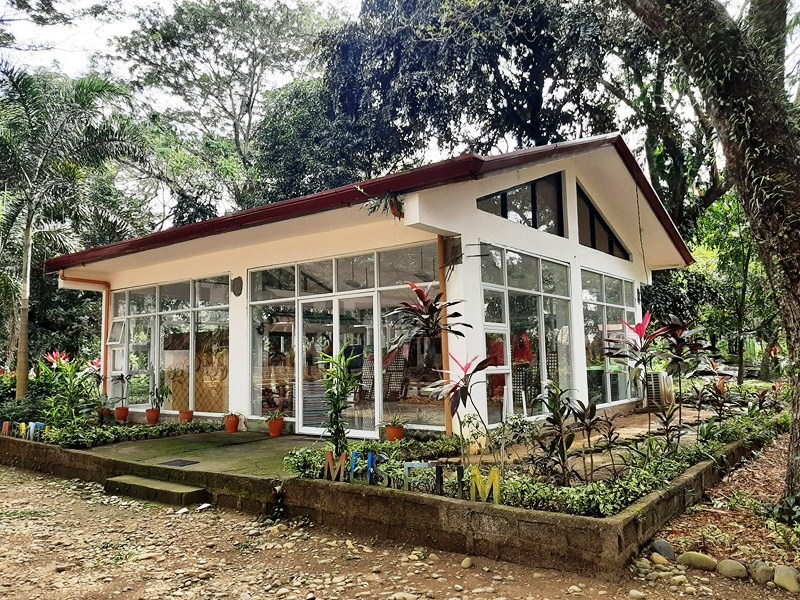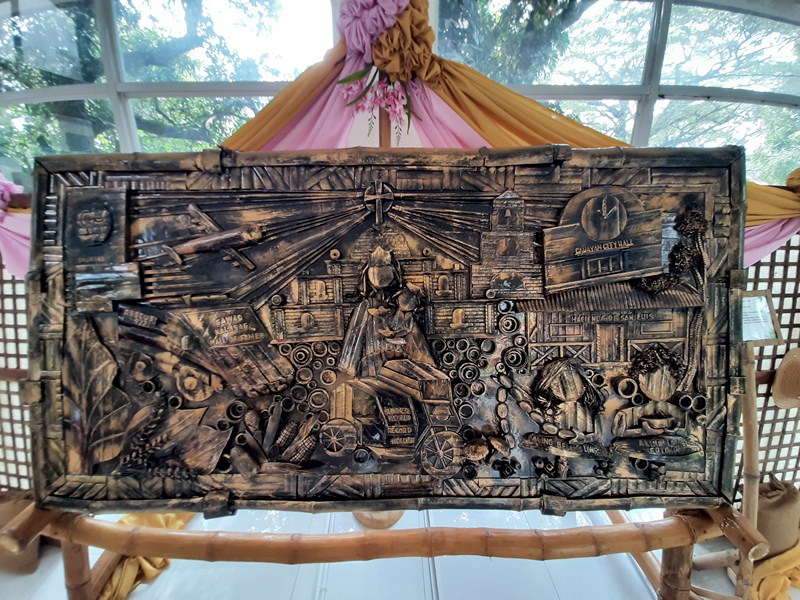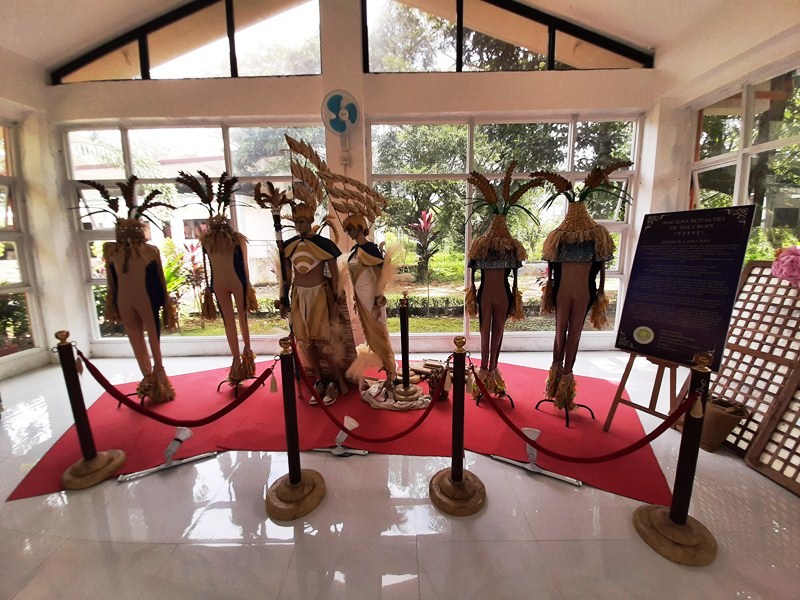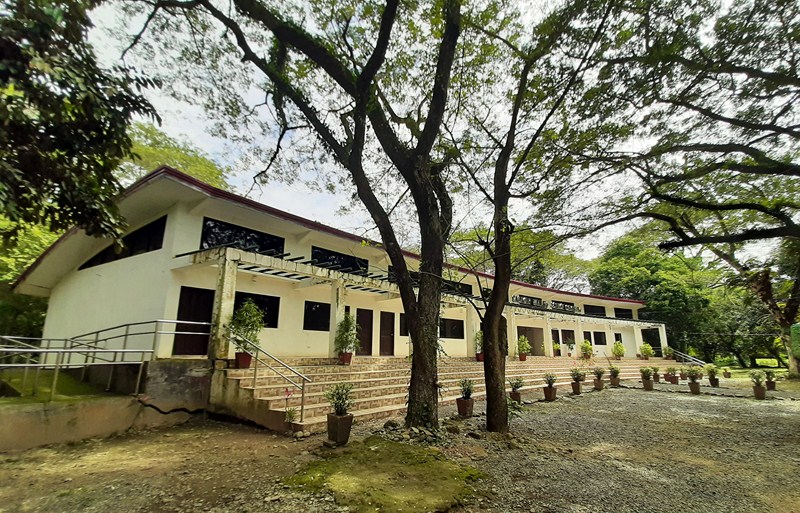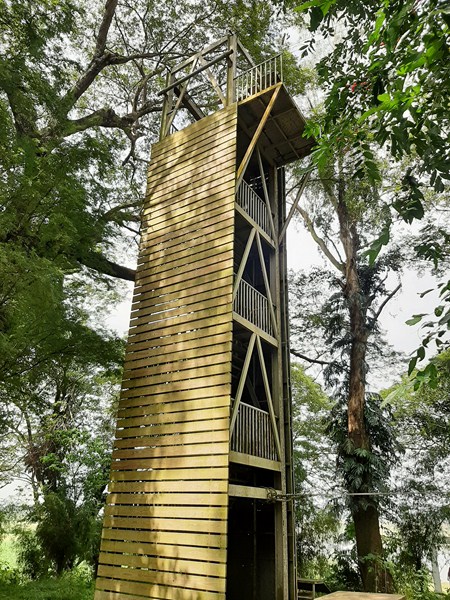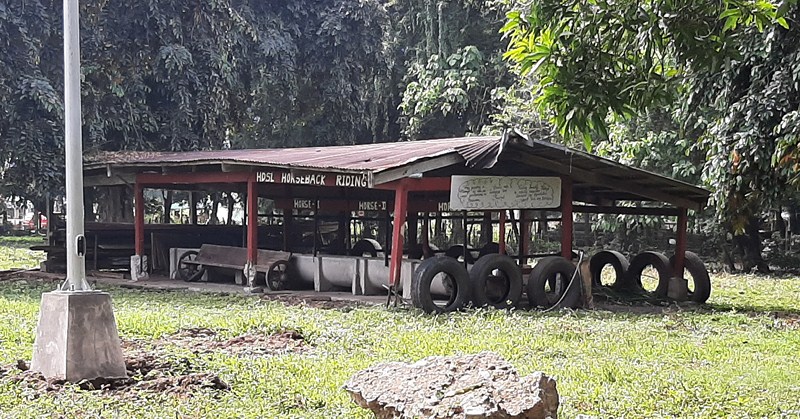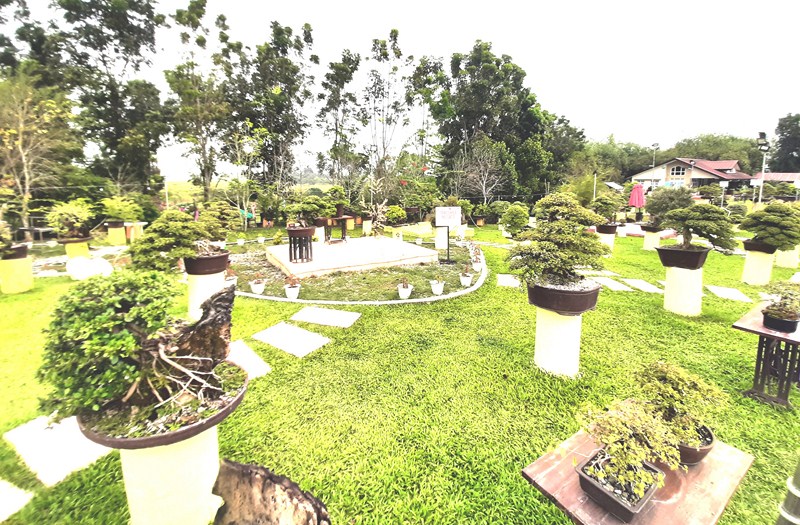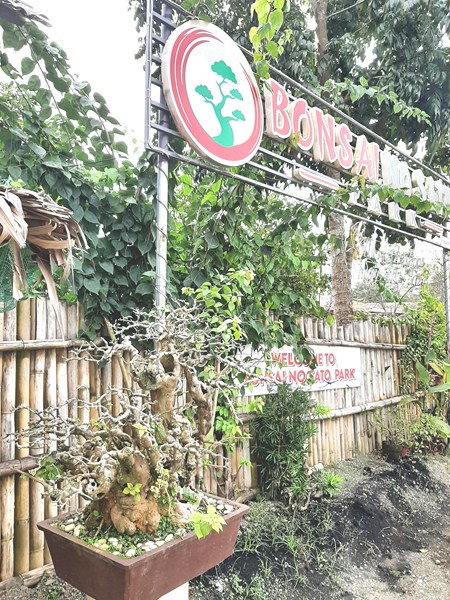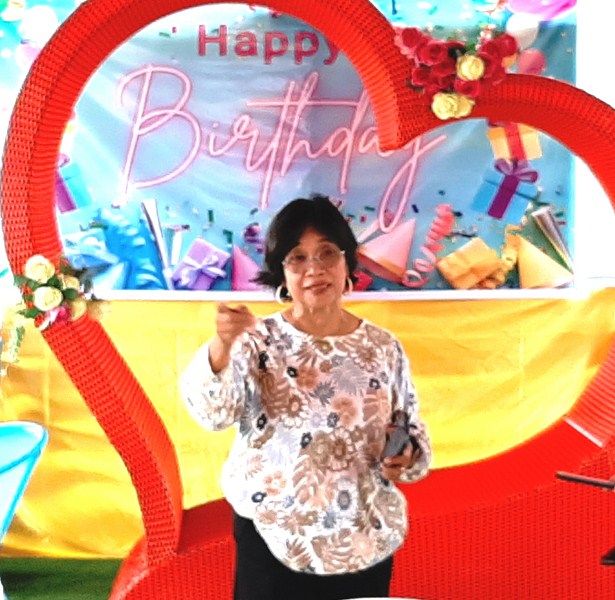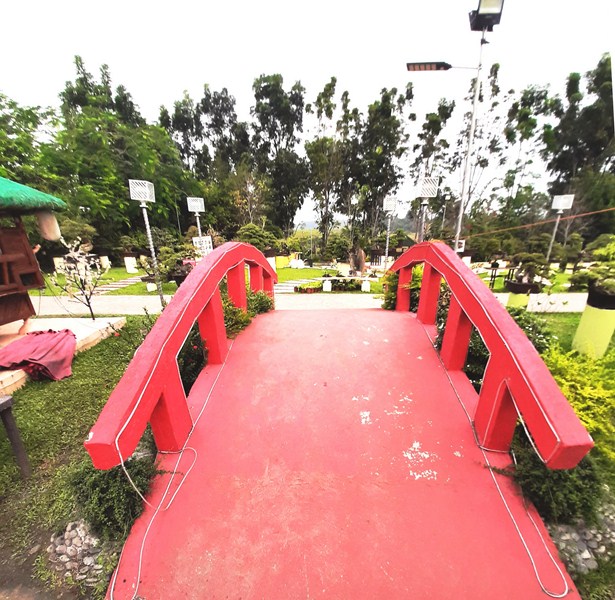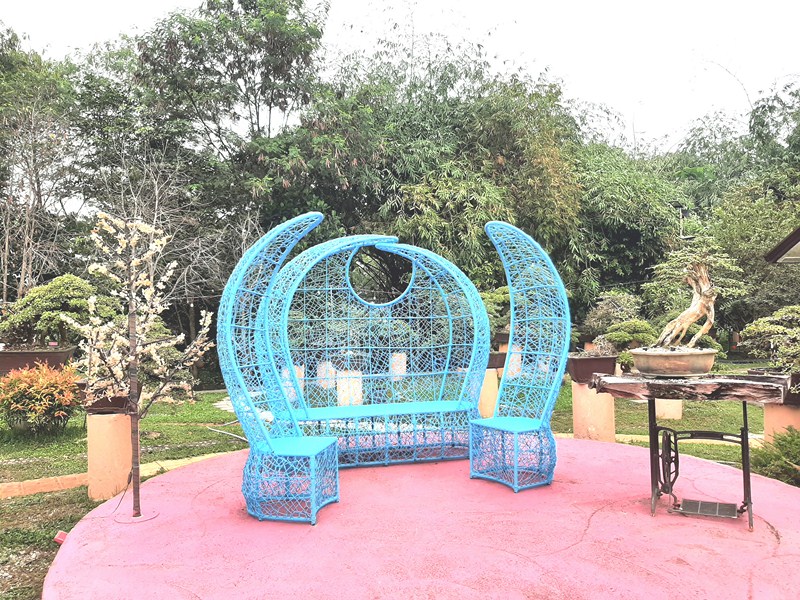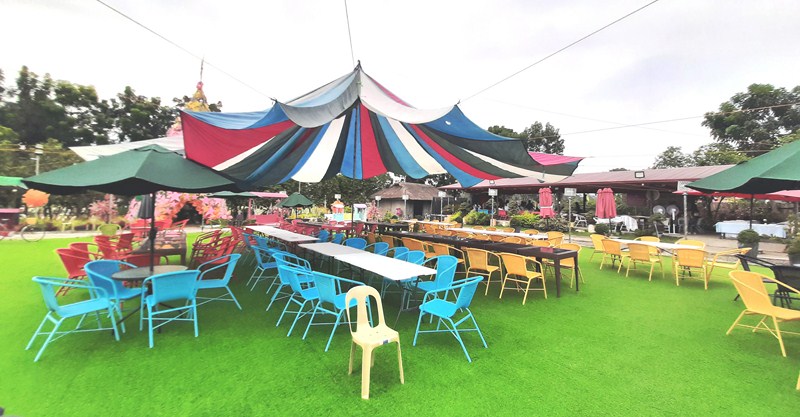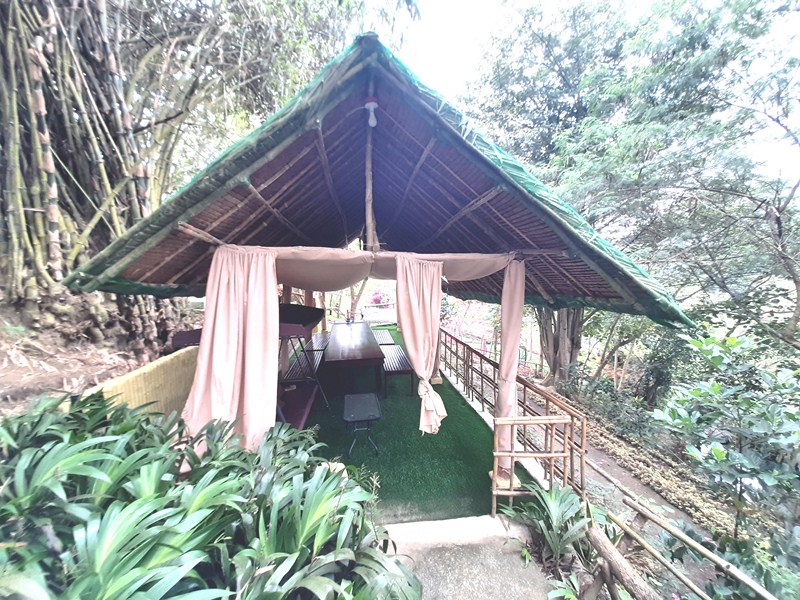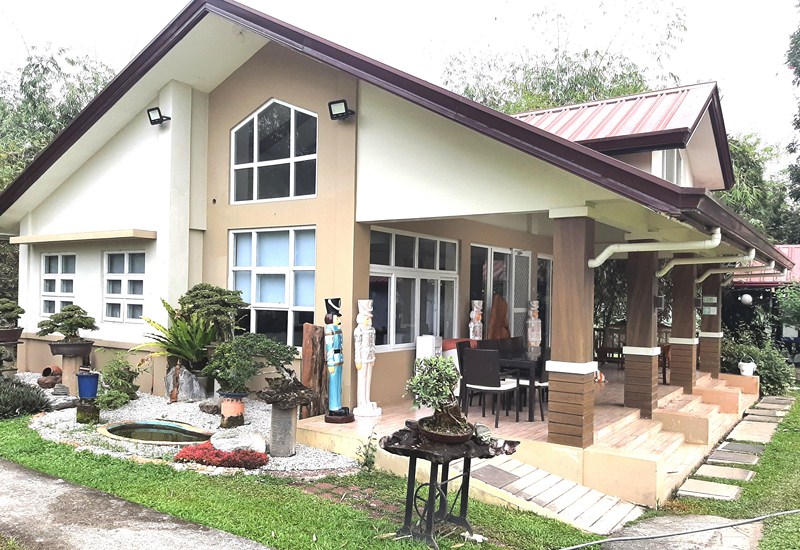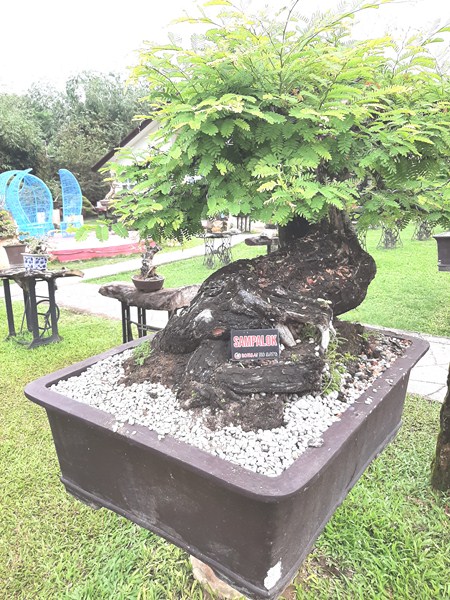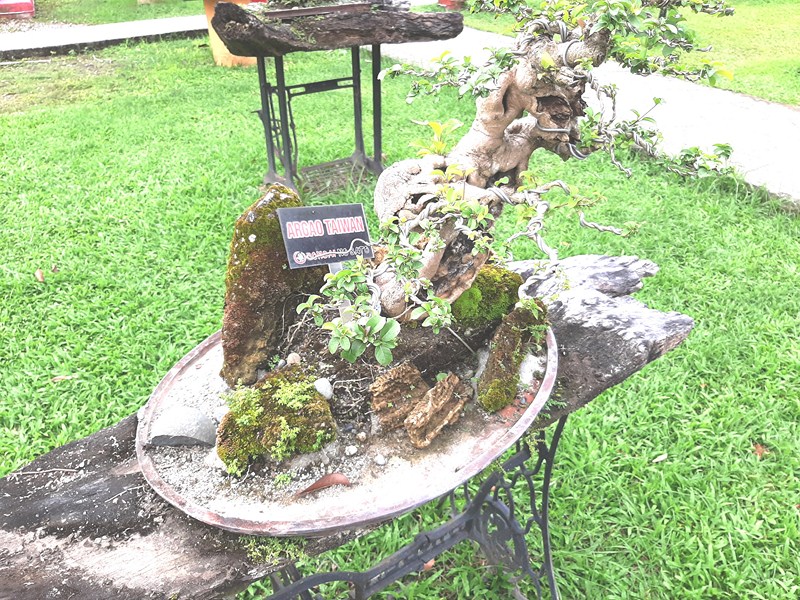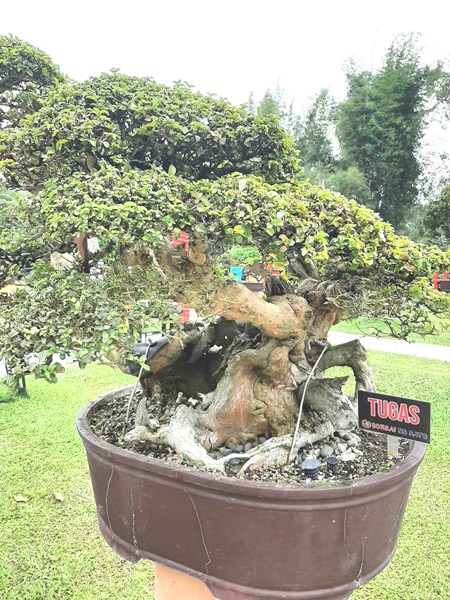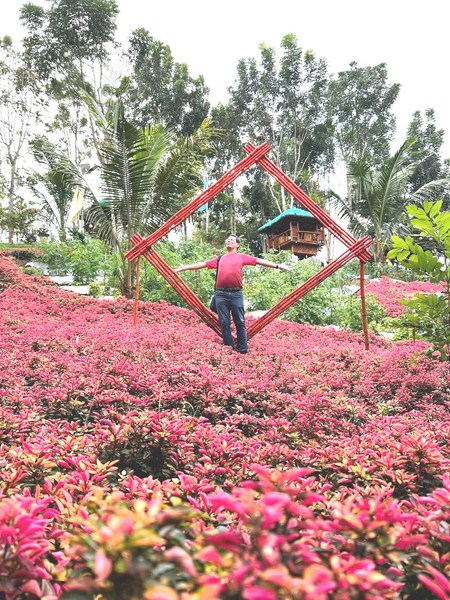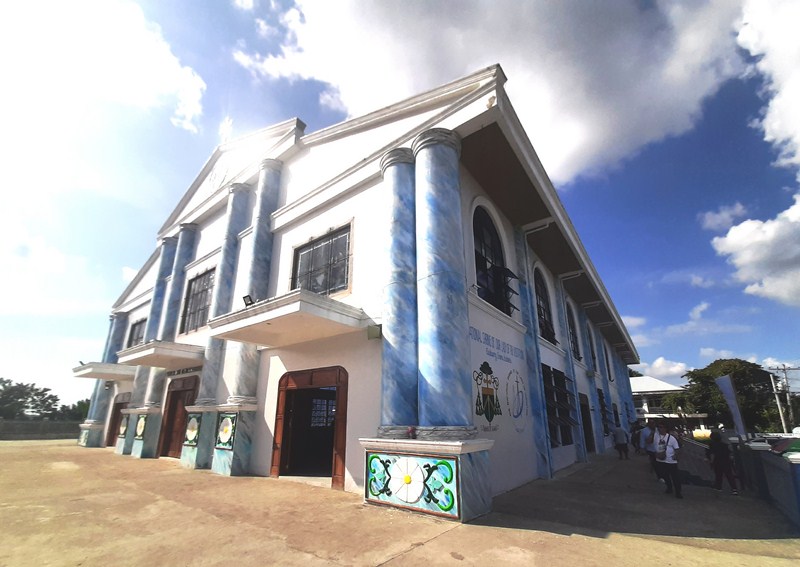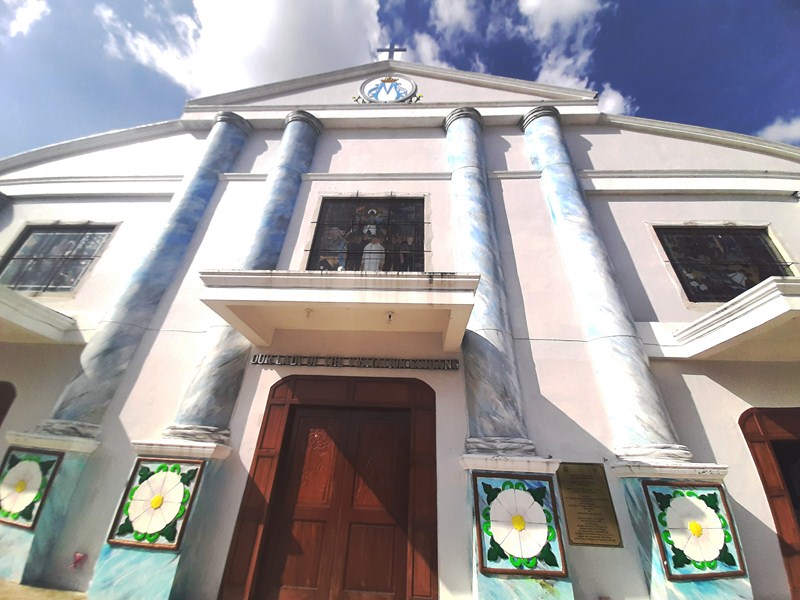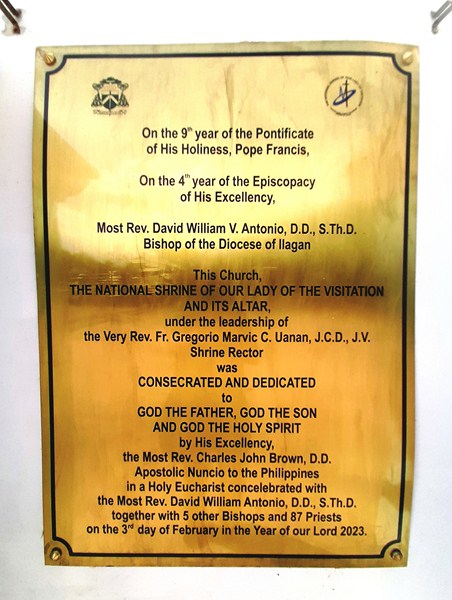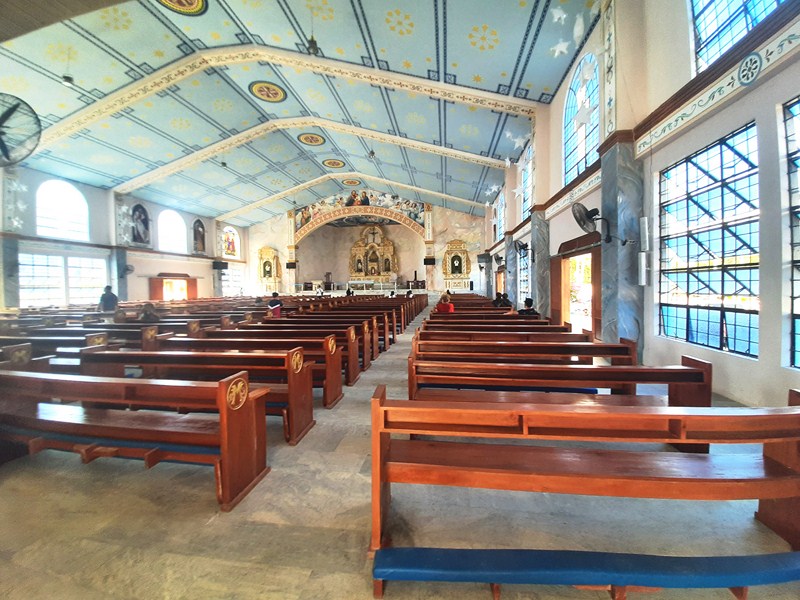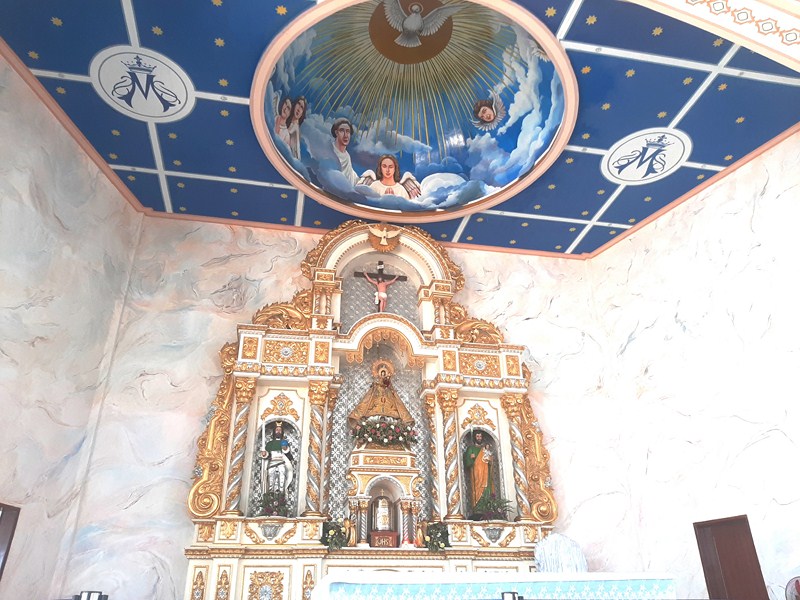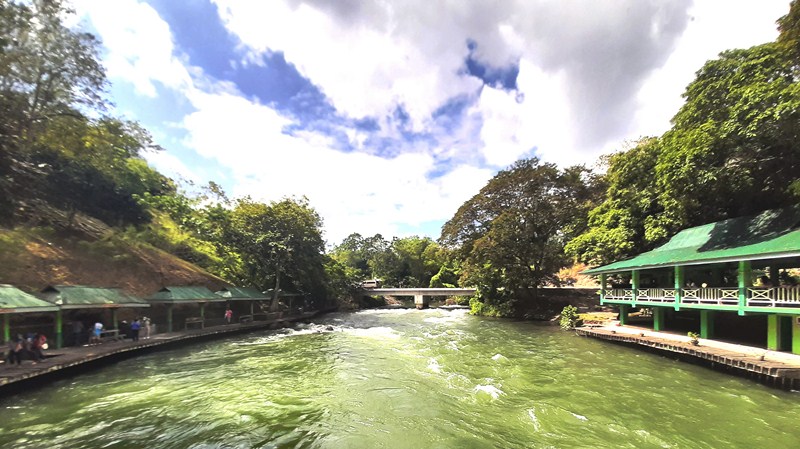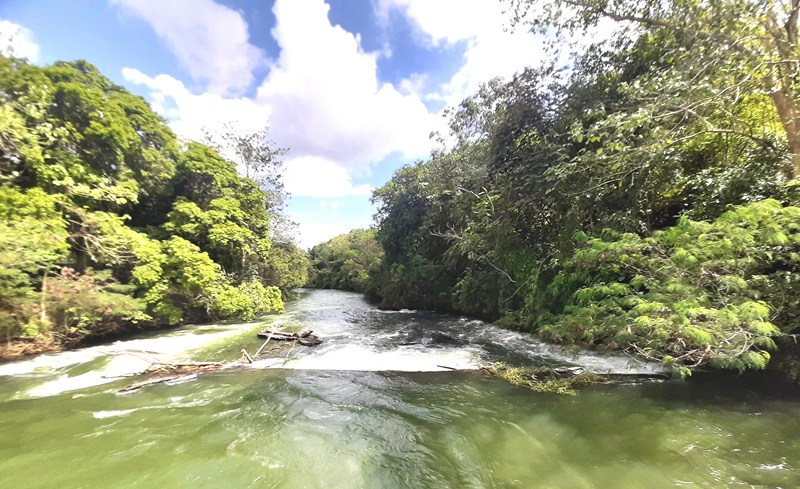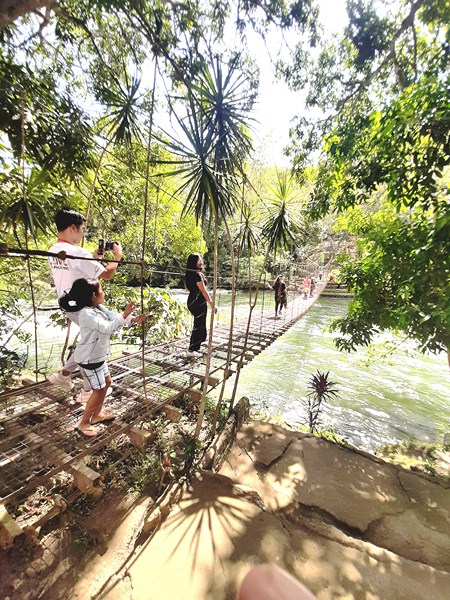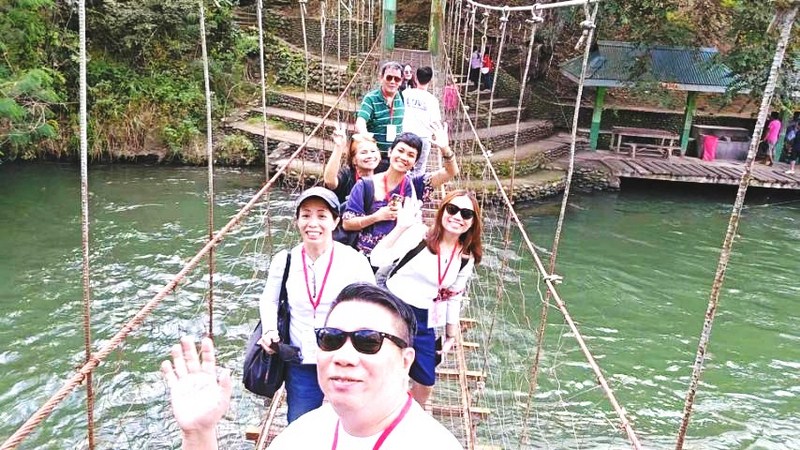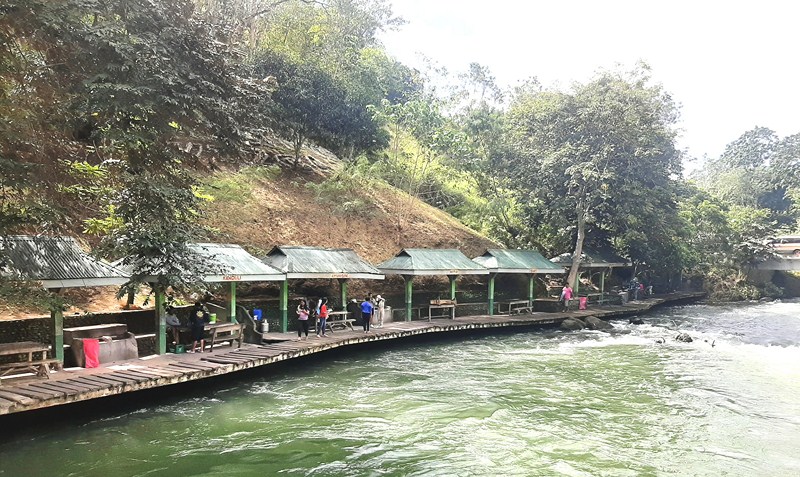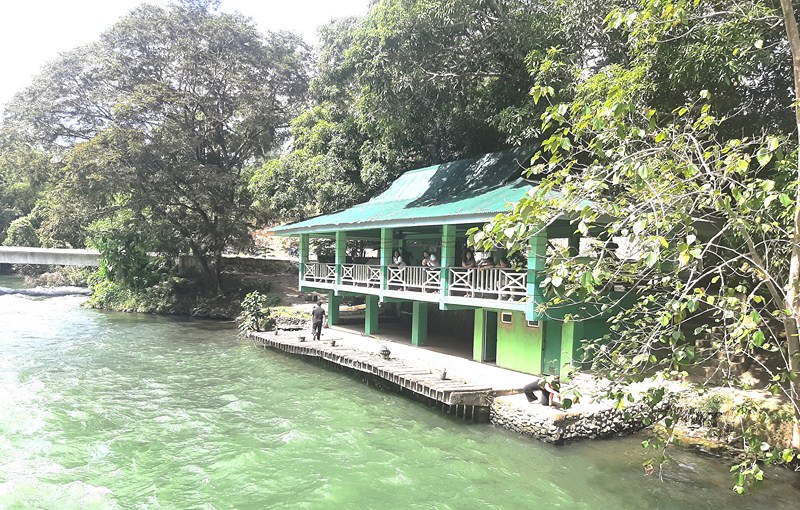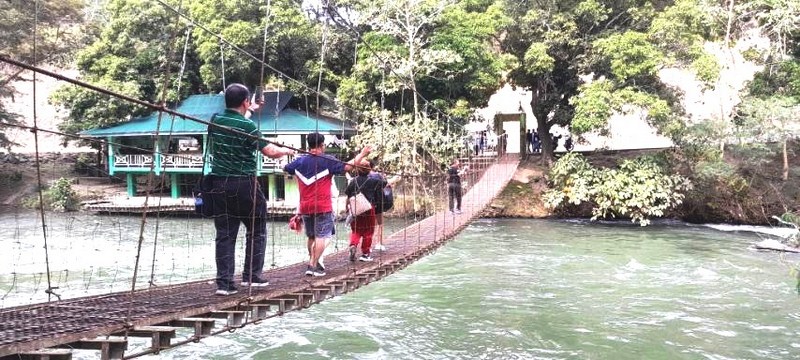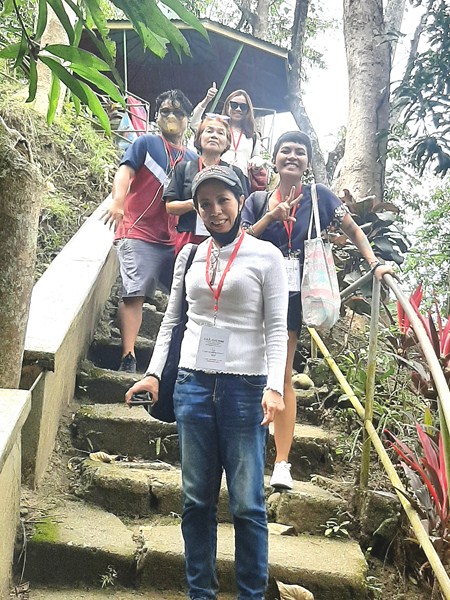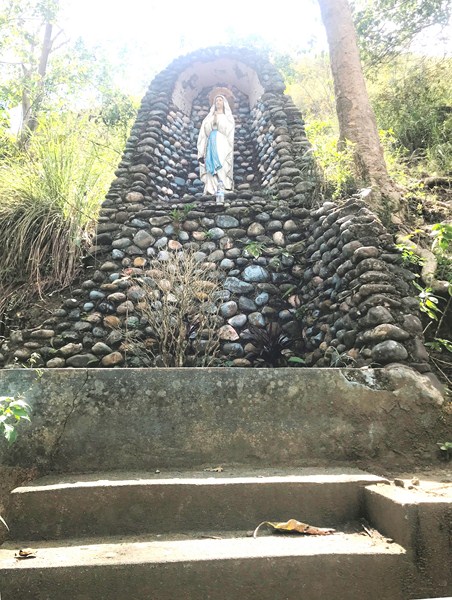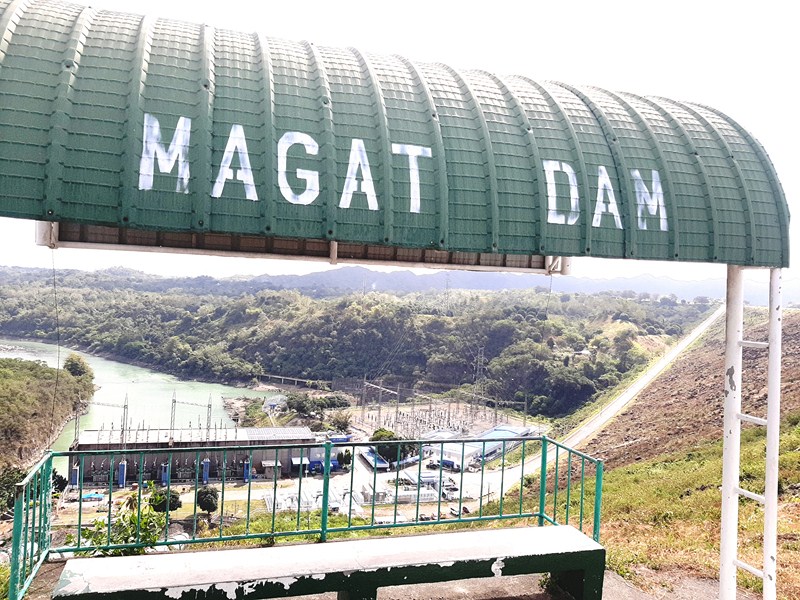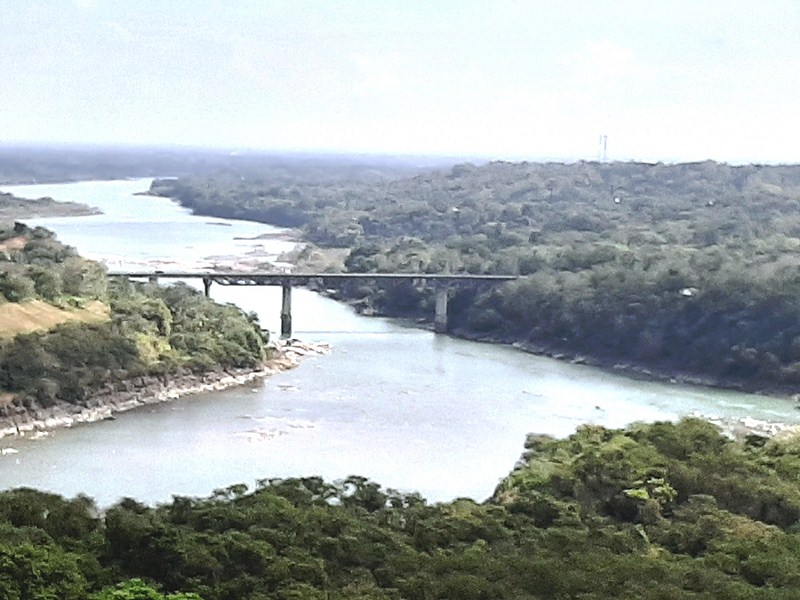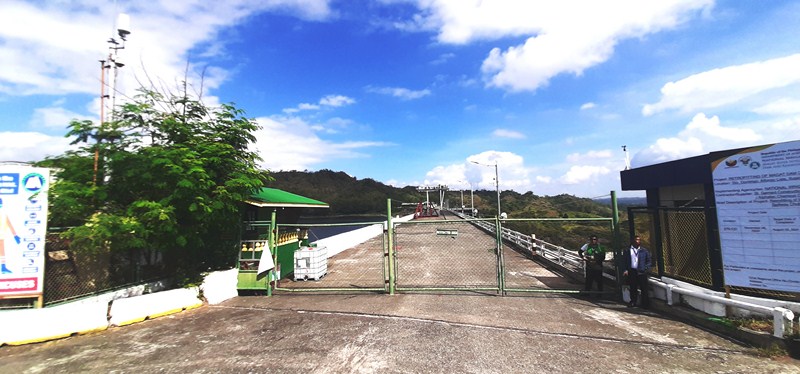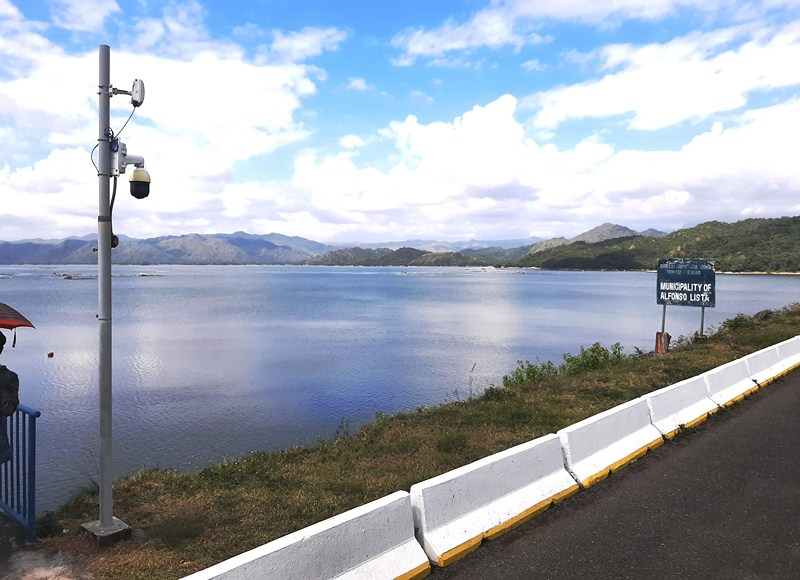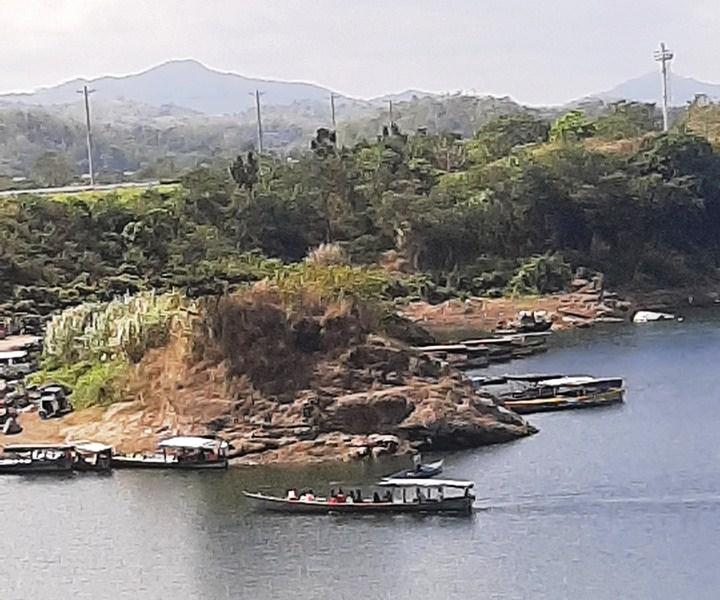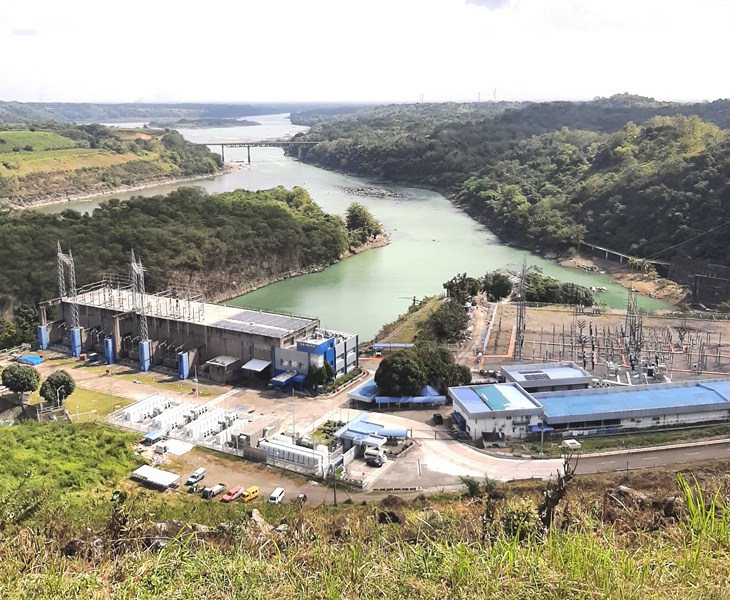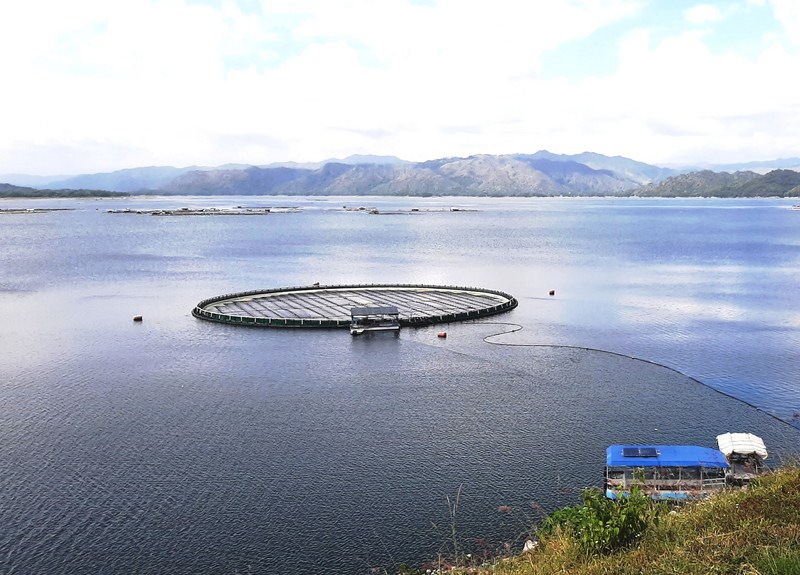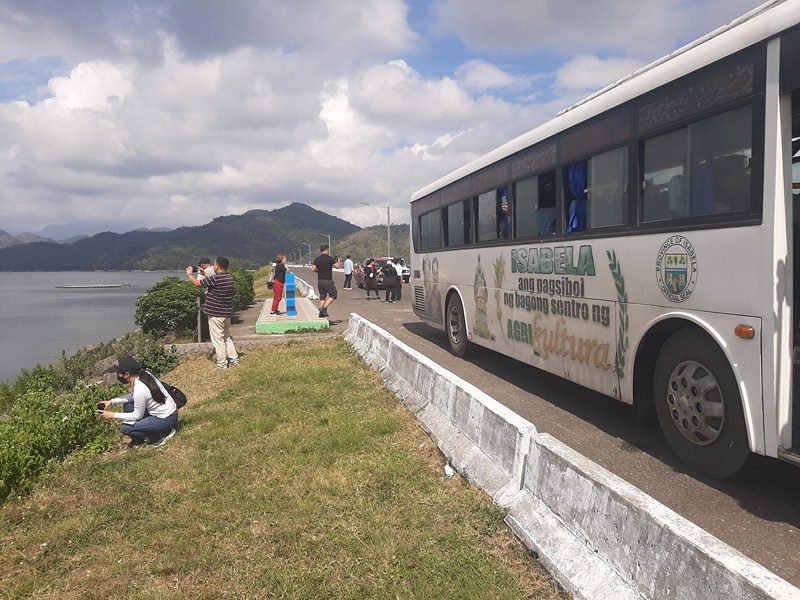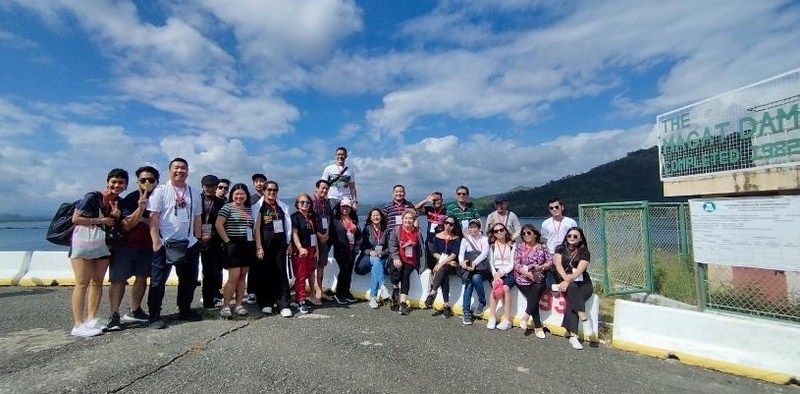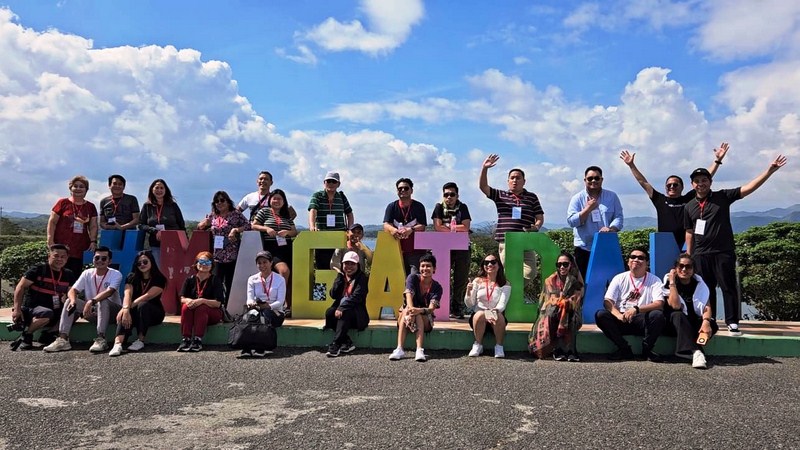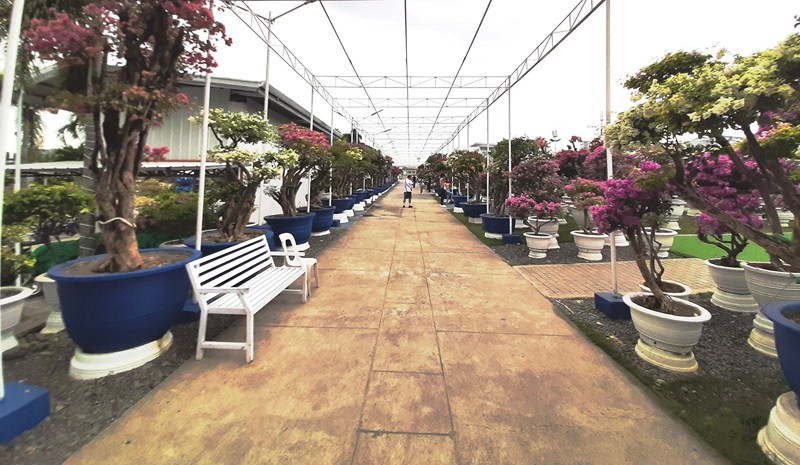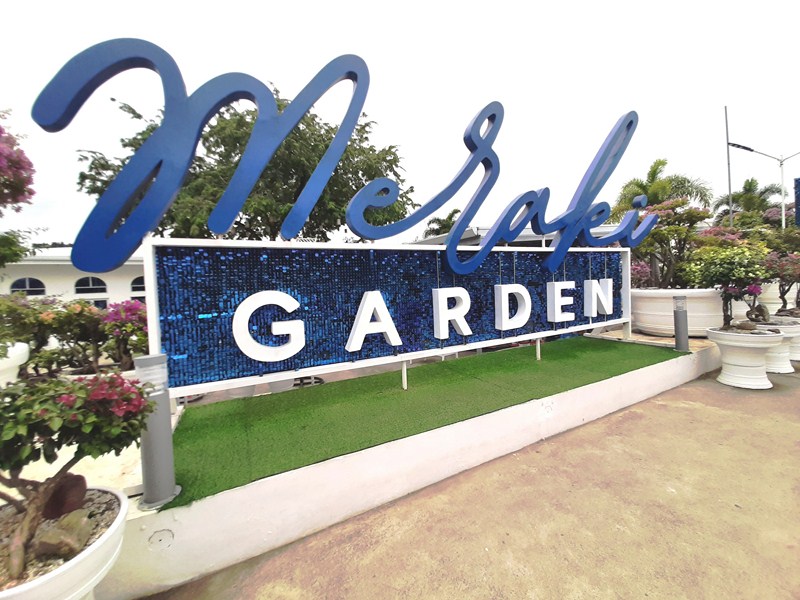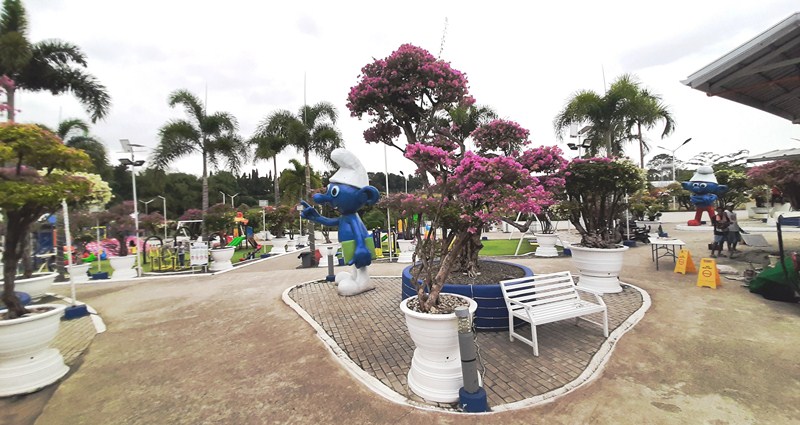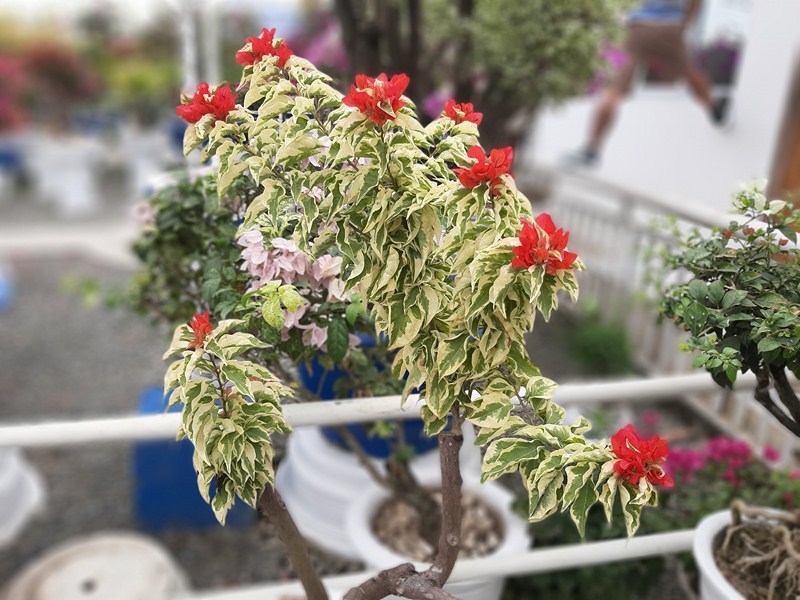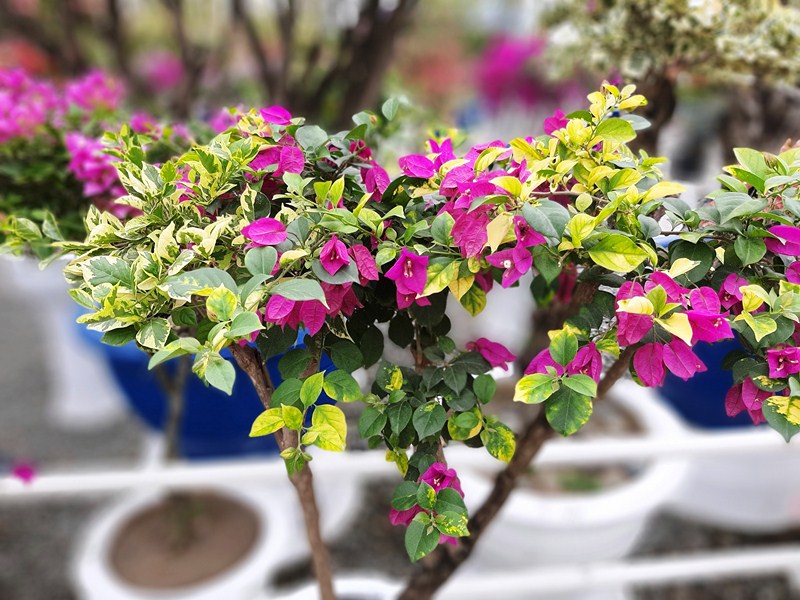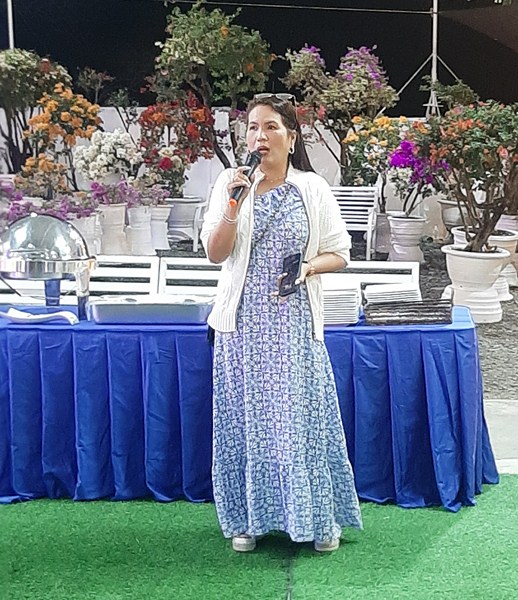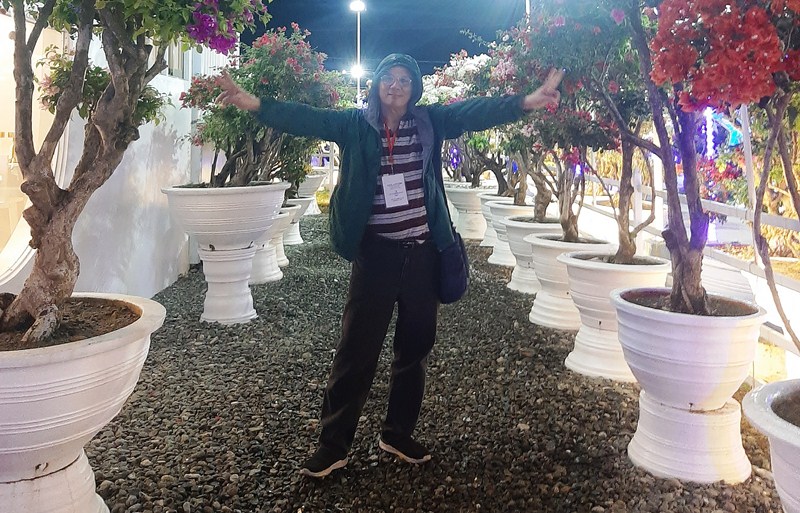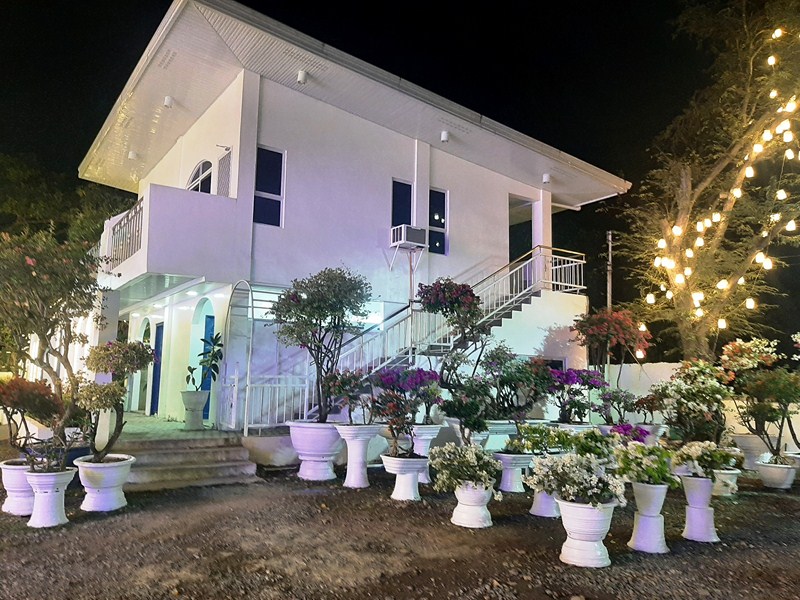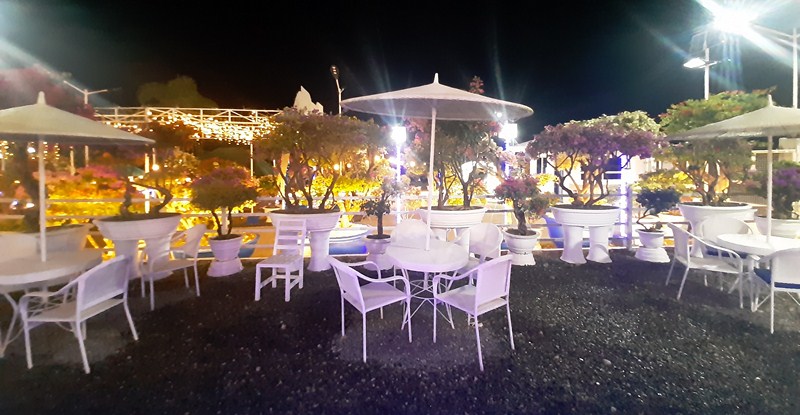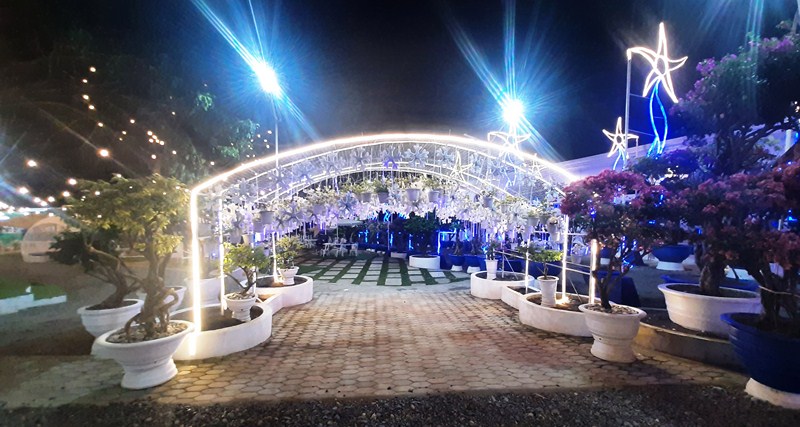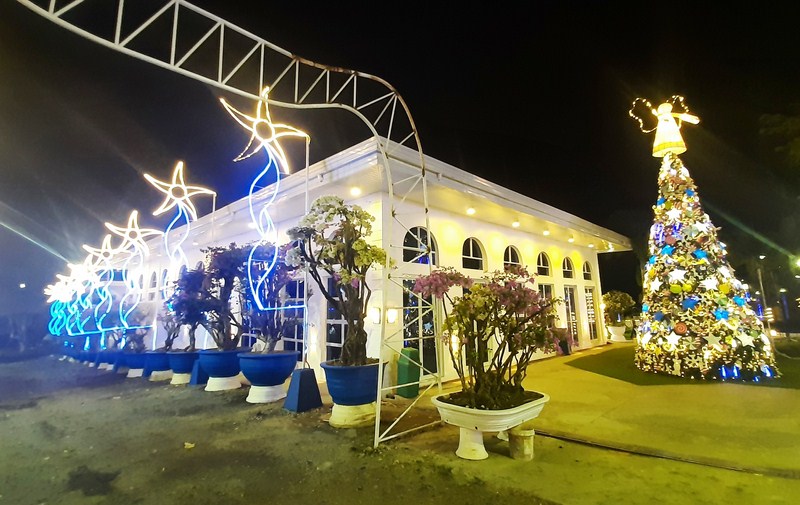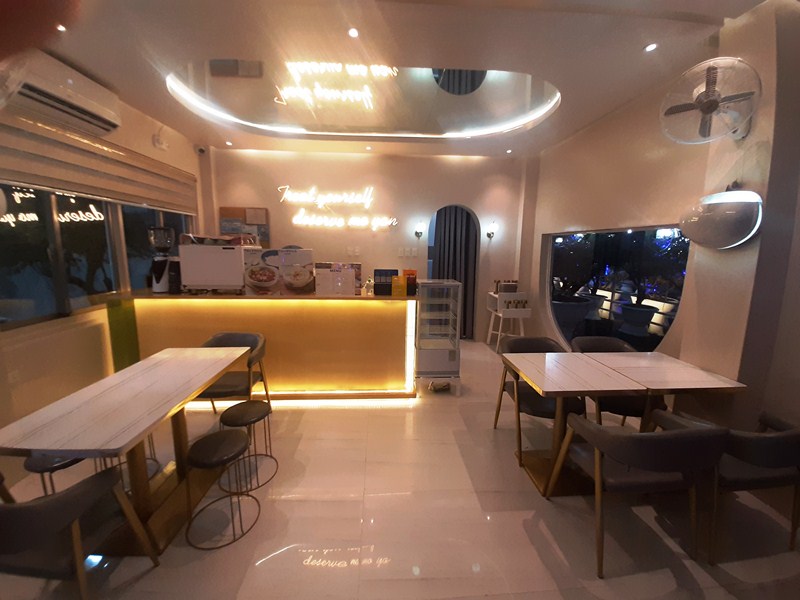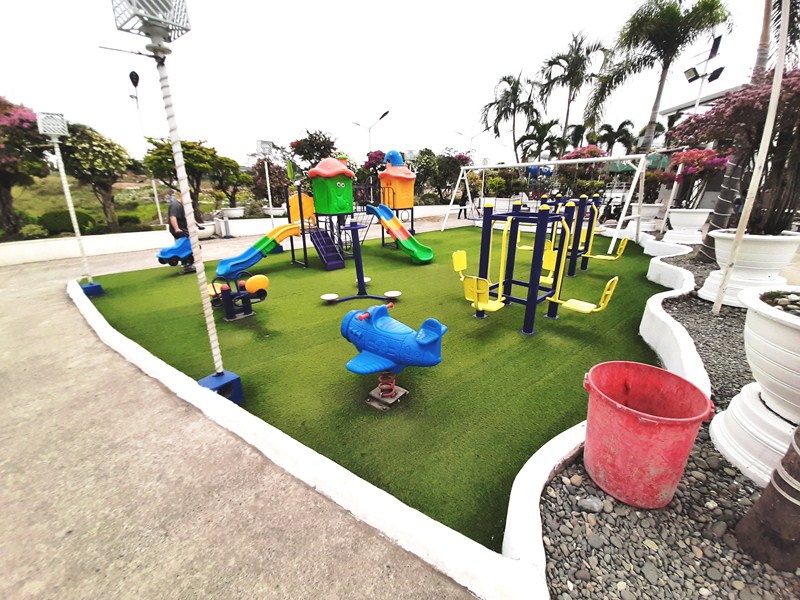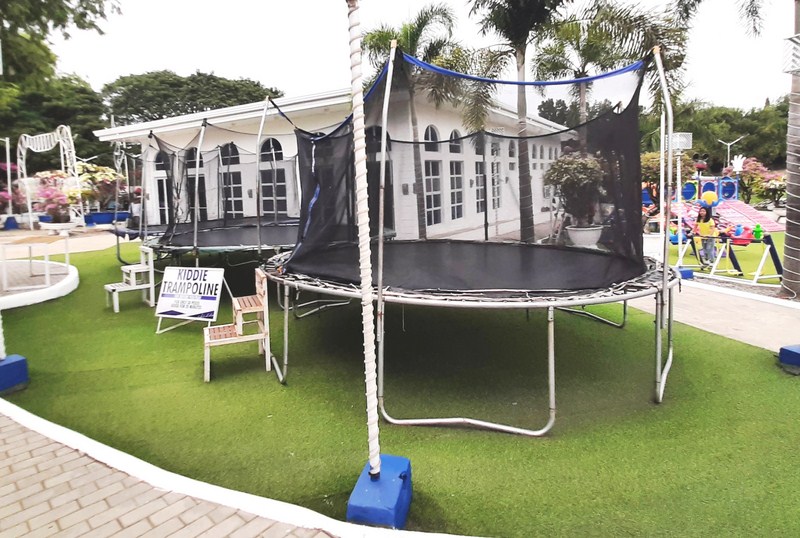This church, constructed in 1738 by Fr. Martin Fernandez, OP, was, together with the convent, destroyed by the strong Intensity 6 earthquake on December 29, 1949. From 1950-1951, a wooden church was constructed, next to the ruins of the Spanish church. La Salette missionary, Fr. Maurice Cardenal, started the restoration of the Spanish church. In 1968, a new roof was constructed together with the flooring.
In March 1978, CICM missionary Fr. John Couvreur, the 75th parish priest, completely renovated the interior of the church and, in March 1979, the ruins of the sacristy were restored and transformed into a week day chapel. From 1950 to 1951, a new brick bell tower, in Spanish style, was built but was later dismantled and the recovered materials were used to build chapels in several barrios. From the ruins of the convent, a multi-purpose hall and dormitory were put up for seminars and meetings.
On June 24, 1993, the roof and ceiling of the church was destroyed by typhoon Goring. It was restored, in a short time, and a beautiful ceiling was built. The church houses a life-size image of the Peruvian nun Rose of Lima, the patron saint of embroidery, gardening, and cultivation of blooming flowers.
On June 27, 2019, the National Museum of the Philippines and the National Commission for Culture and the Arts (NCCA) recognized the church, and its surrounding complex, as an Important Cultural Property and, on May 12, 2023, a historical marker was installed. This church, as well as the Church of Our Lady of Atocha in Alicia, and the Church of Our Lady of the Pillar in Cauayan City, are examples of what is called as the “Cagayan Style” of Spanish churches that was inspired by the Tuguegarao church.
Check out “Church of Our Lady of Atocha“ and “Church of Our Lady of the Pillar“
AUTHOR’S NOTES
The church’s Baroque-style, brick façade has a semicircular arch main entrance flanked by paired (one square and one round) pilasters, above which are semicircular arched windows, and semicircular arch niches for statues (currently empty). The undulating pediment, capped by pinnacles, has a small, centrally located rose window.
On the church’s right is a three-storey, square bell tower, with receding storeys, semicircular arch blind window on the first storey, segmental arch open windows on the two upper storeys and a pyramidal roof. On the church’s left is the brick convent which is now a multipurpose hall, used for seminars and meetings, and a dormitory.
Church of St. Rose of Lima: Poblacion, 3301 Gamu, Isabela. Mobile numbers: (0916) 680-3680 and (0936) 360-1064. E-mail: srlgamu@zoho.com. Feast of St. Rose of Lima: August 23.
Isabela Provincial Tourism Office: Provincial Capitol Complex, City of Ilagan, Isabela. Tel: (078) 323-3146. Mobile number: (0917) 317-3820. E-mail: isabelatourismoffice@gmail.com.
Isabela Provincial Information Office: Provincial Capitol Complex, City of Ilagan, Isabela. Tel: (078) 323-0248. Mobile number: (0927) 395-7555. E-mail: letters_info@yahoo.com.
How to Get There: Gamu is located 413.4 kms. (a 7.75-hour drive) from Manila and 21.5 kms.(a 30-min. drive) from the City of Ilagan. The church is located in front of the town’s municipal hall.

